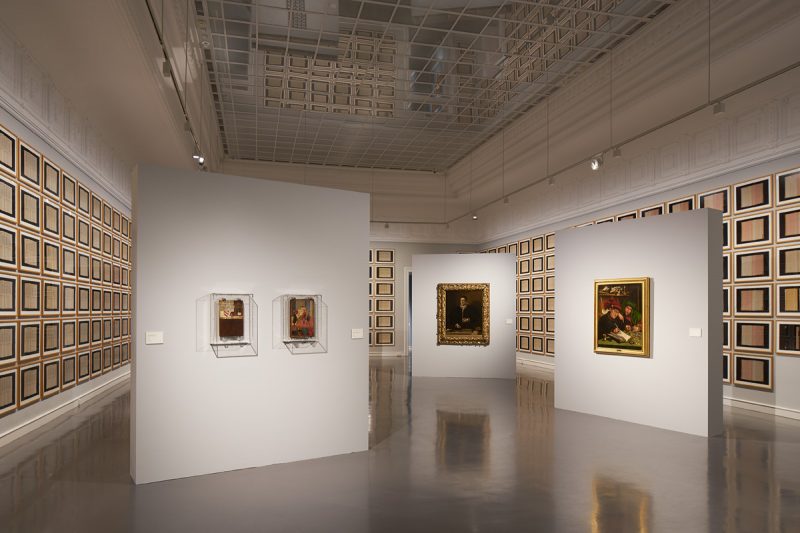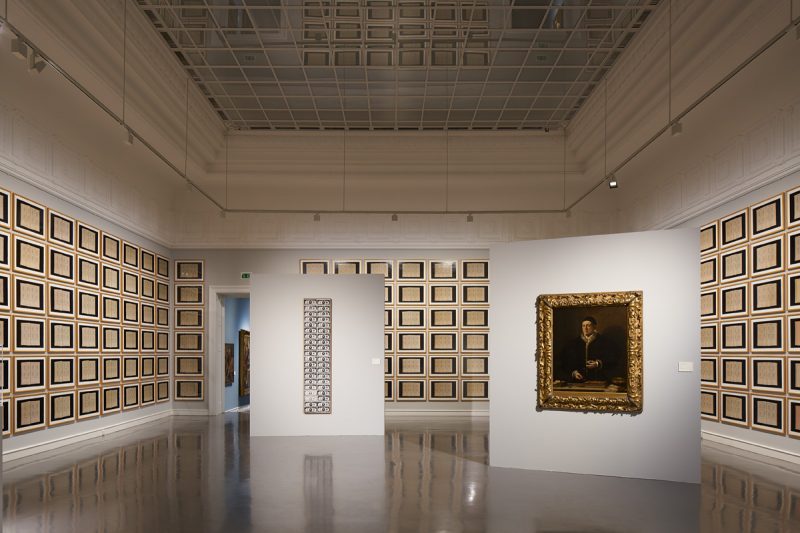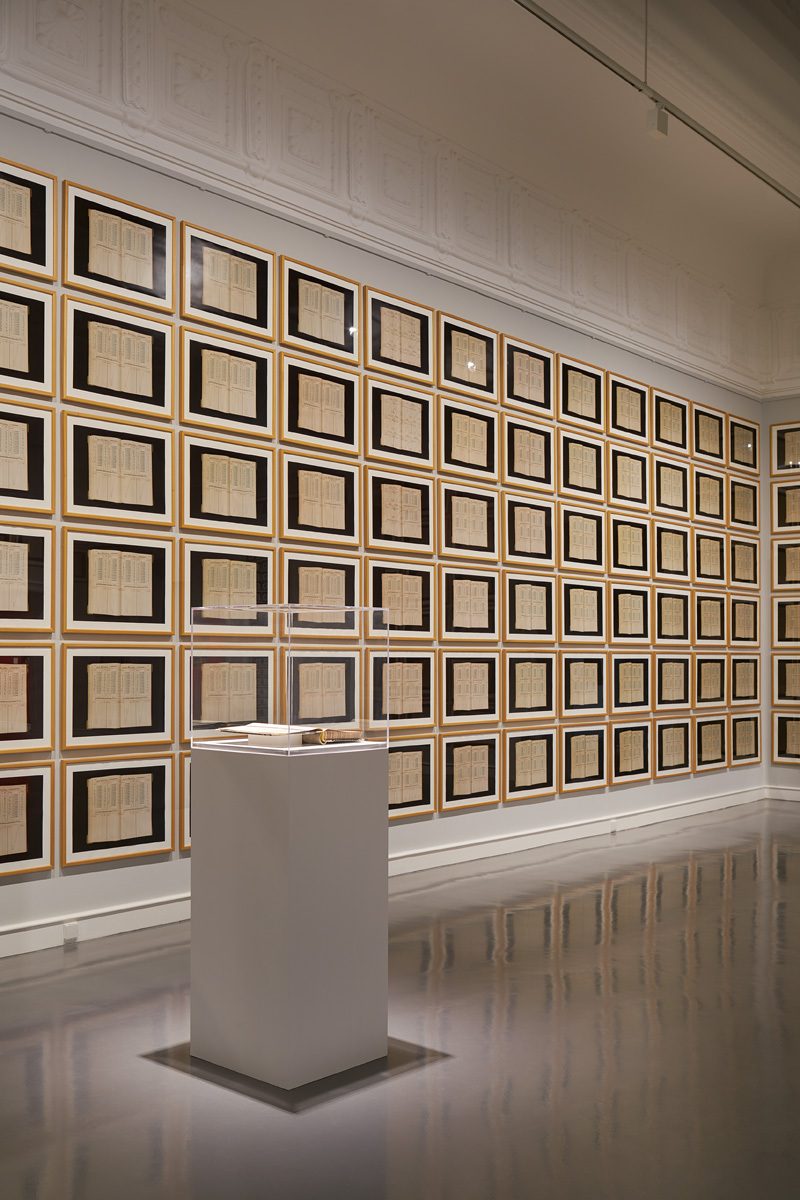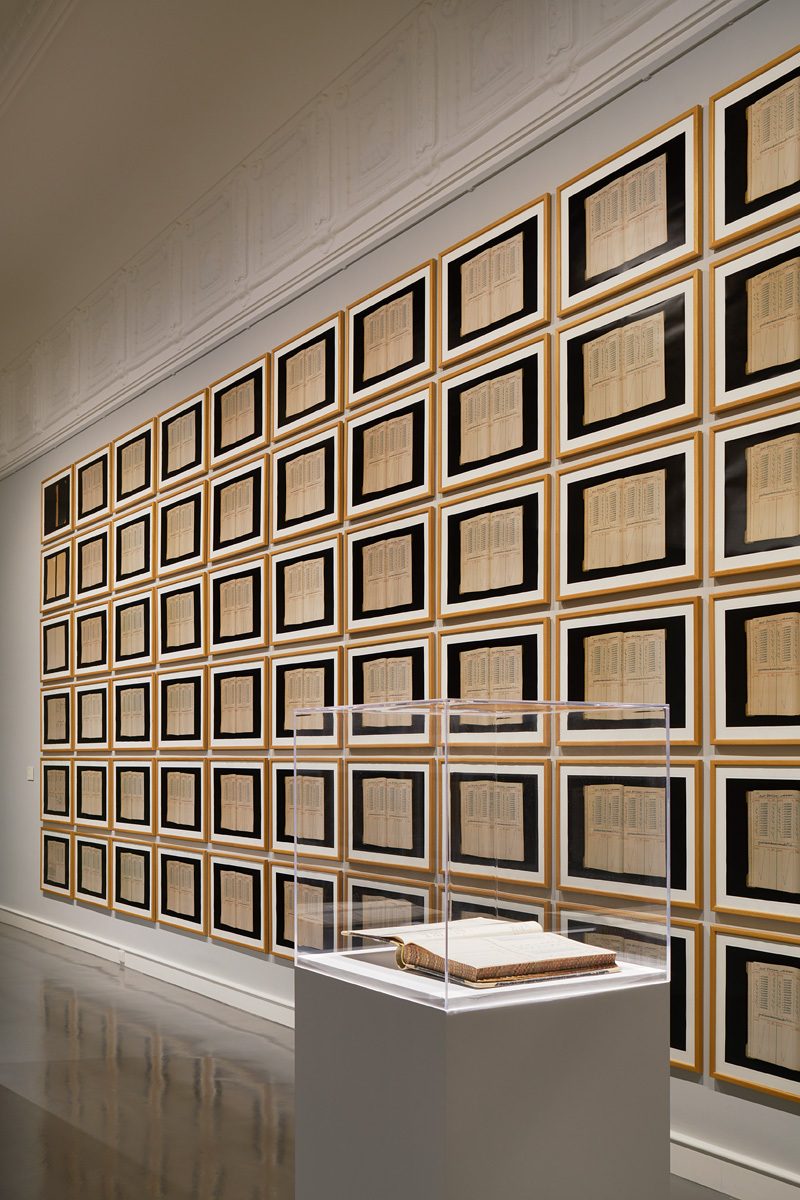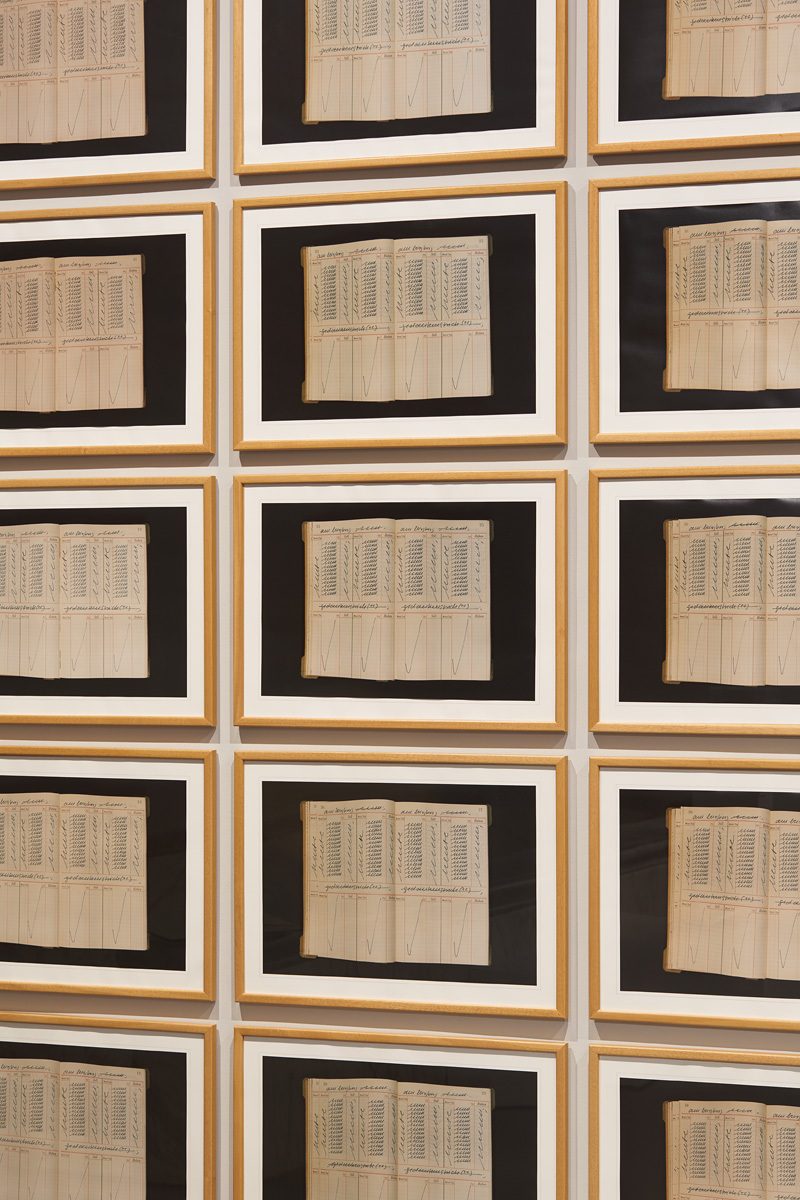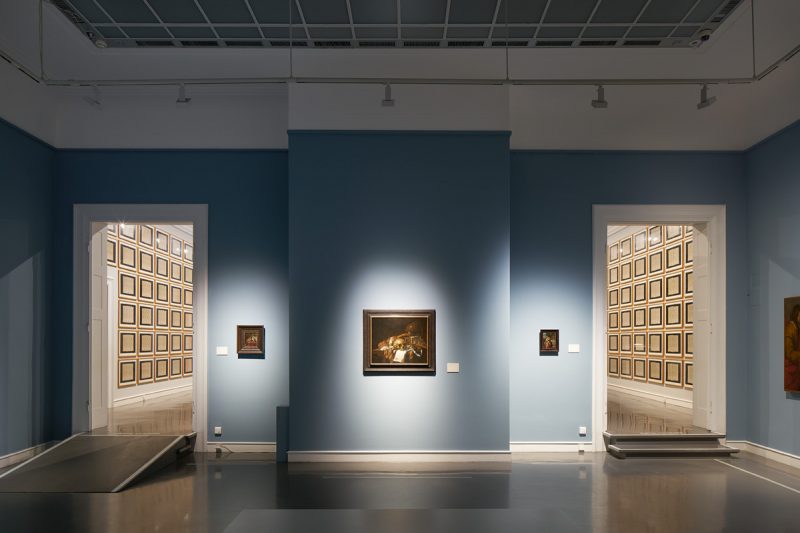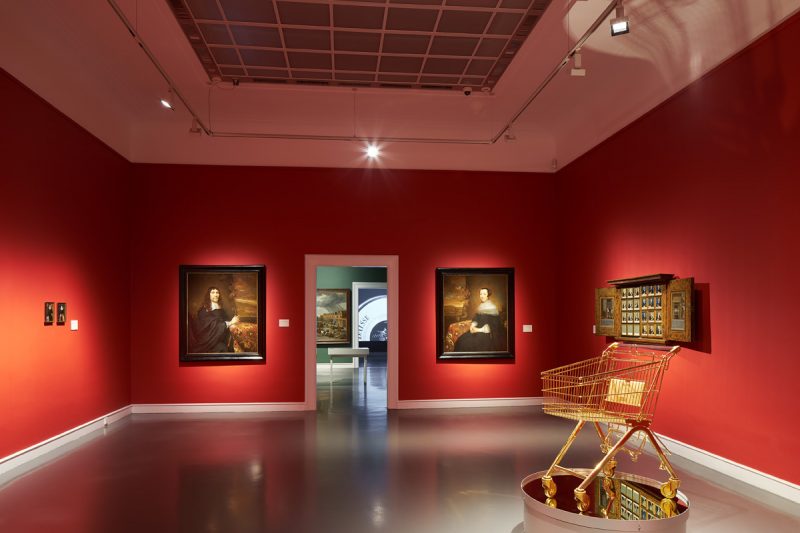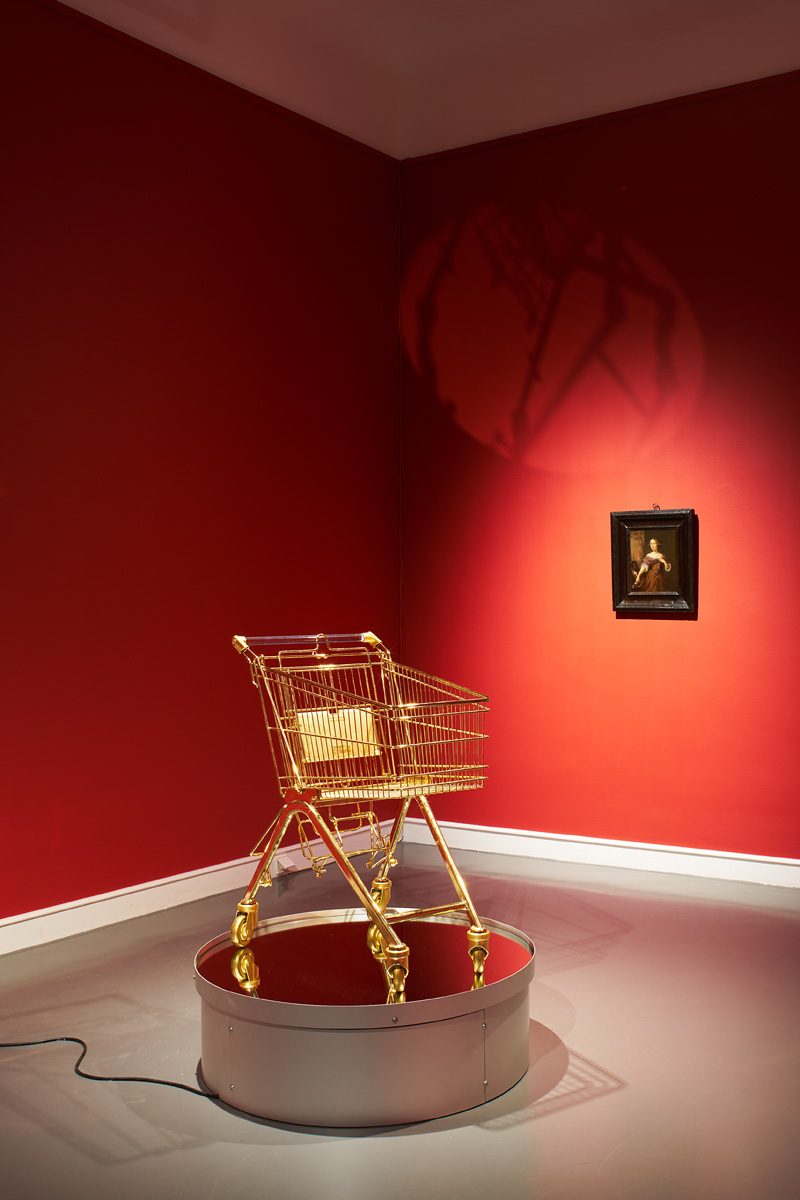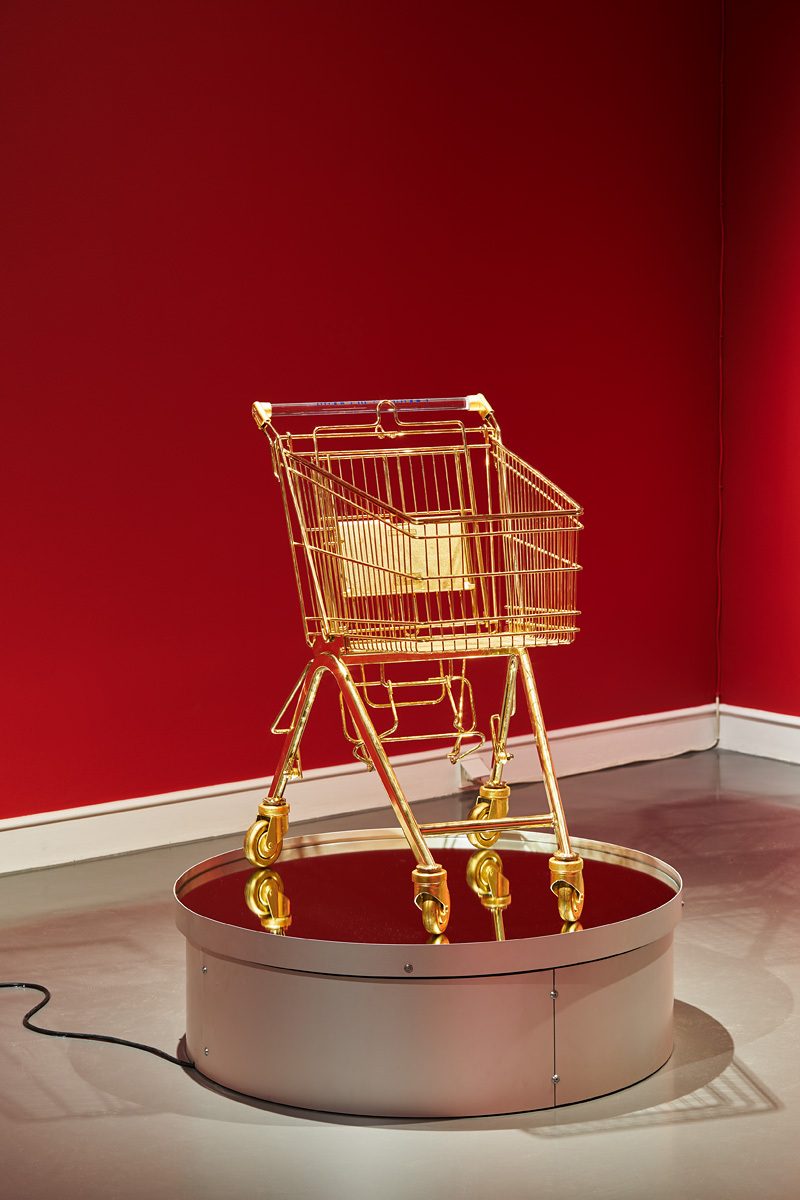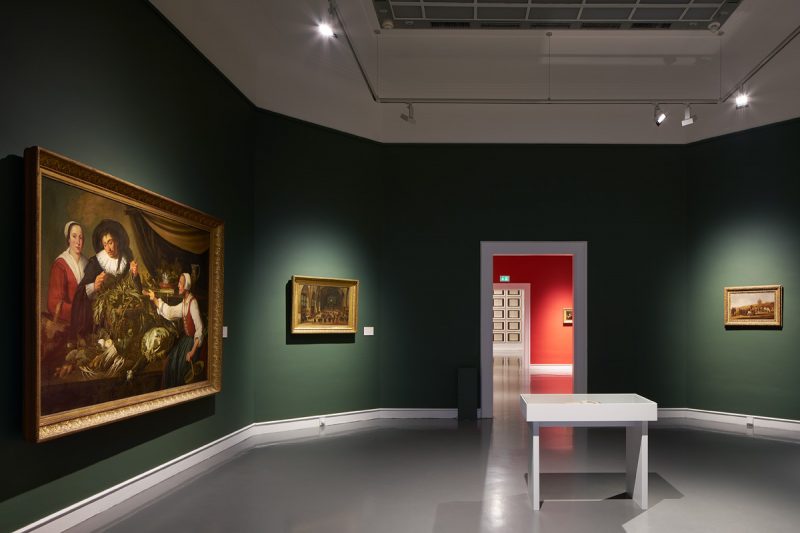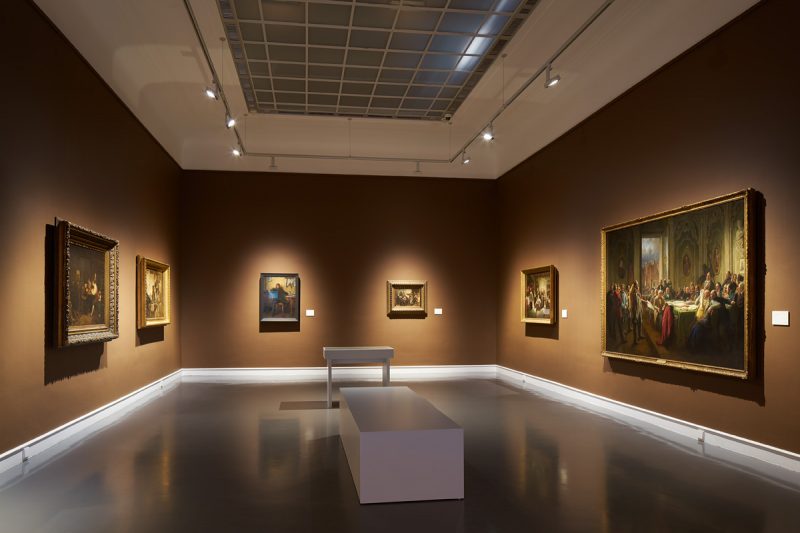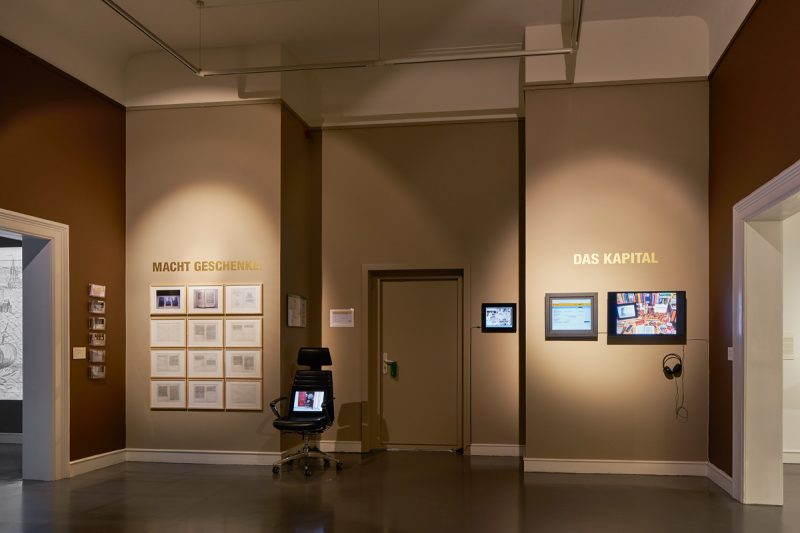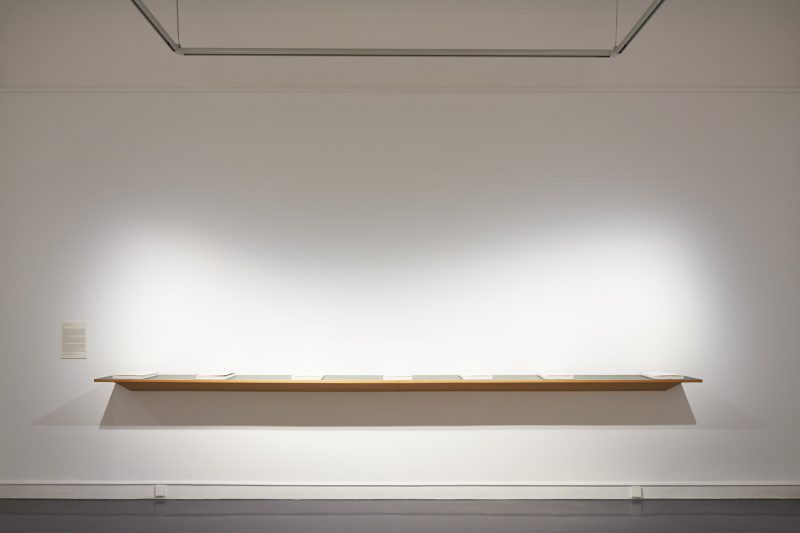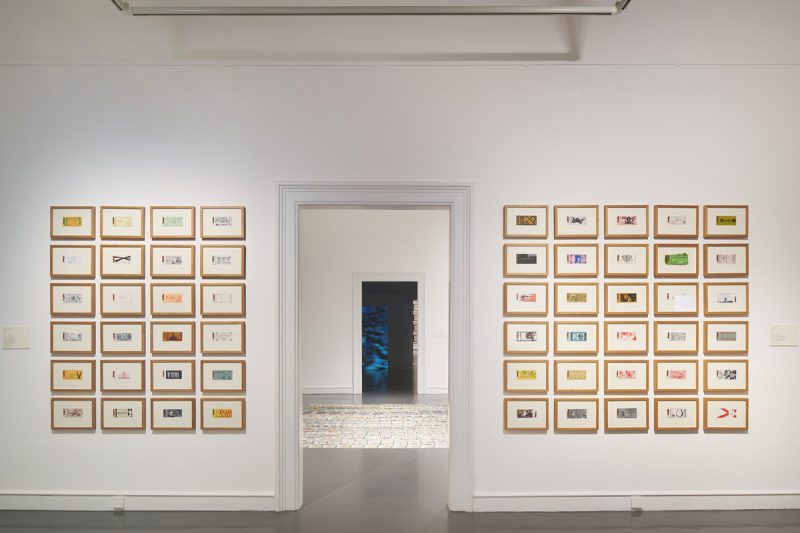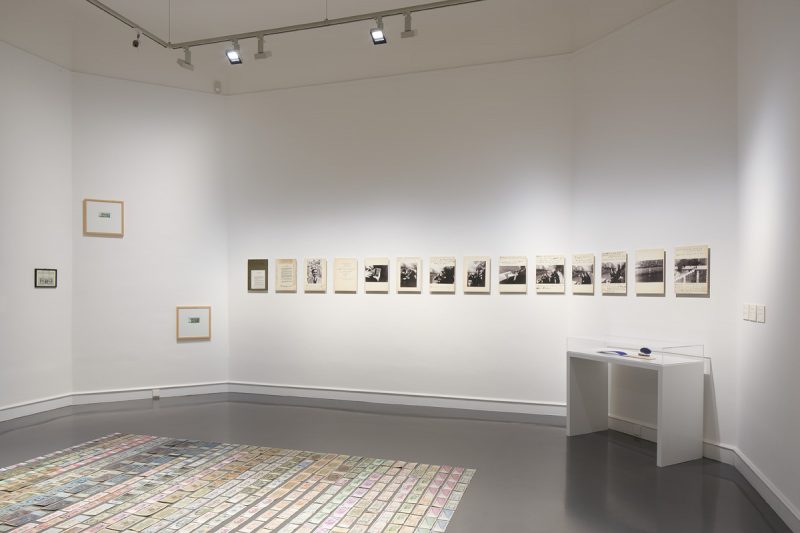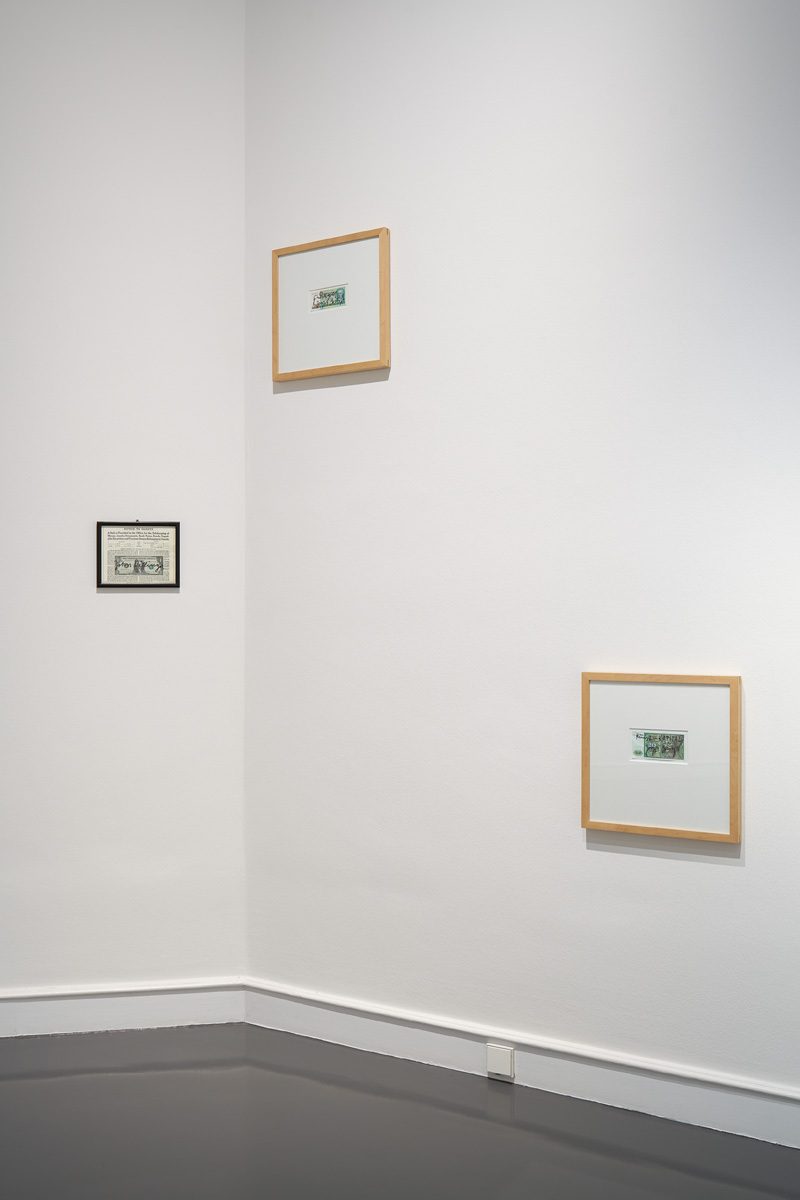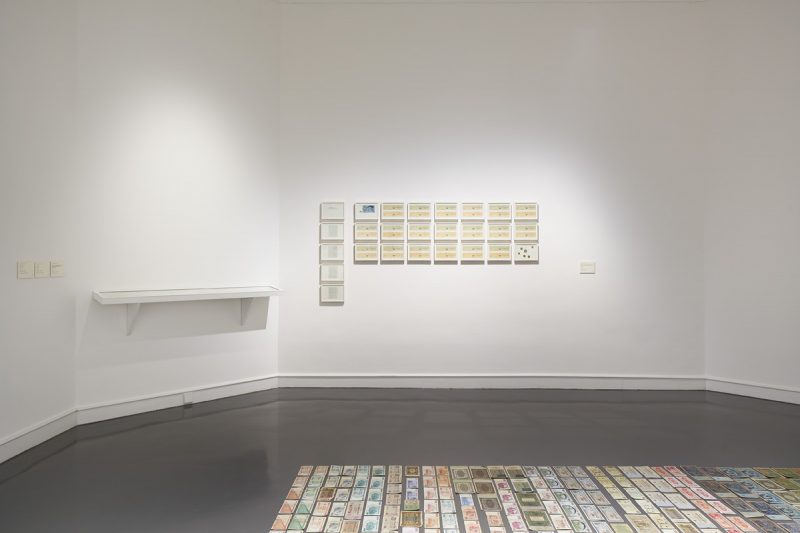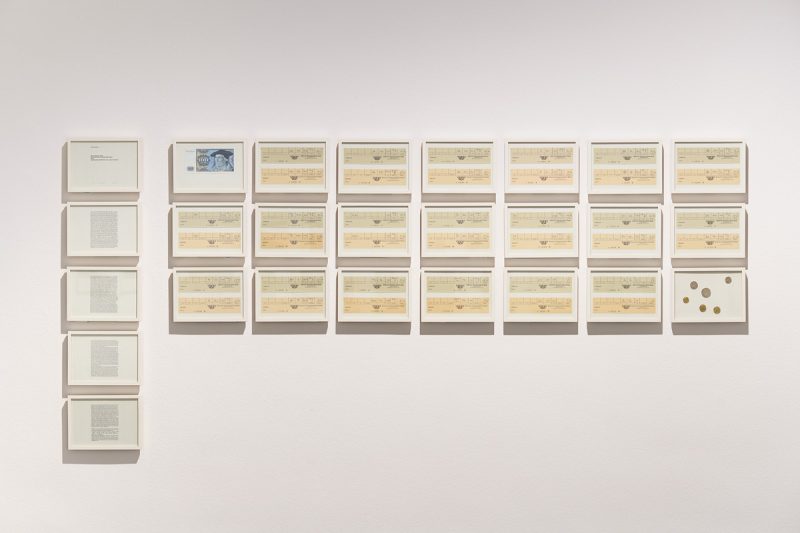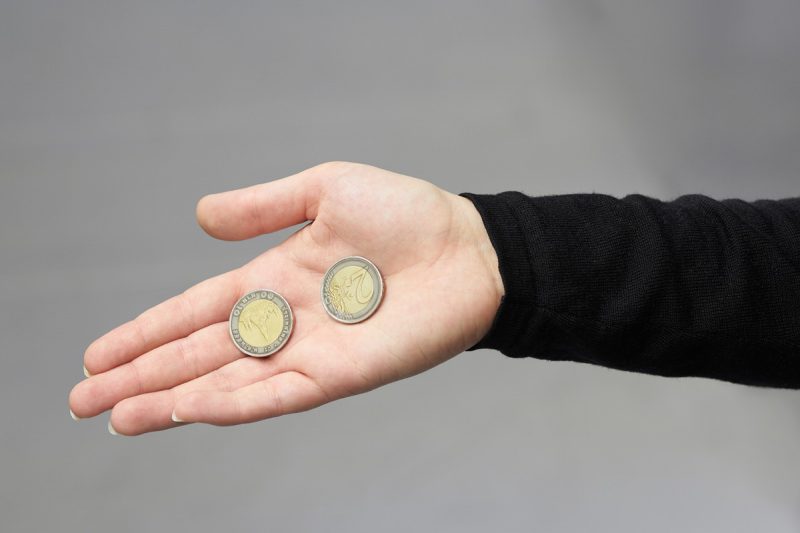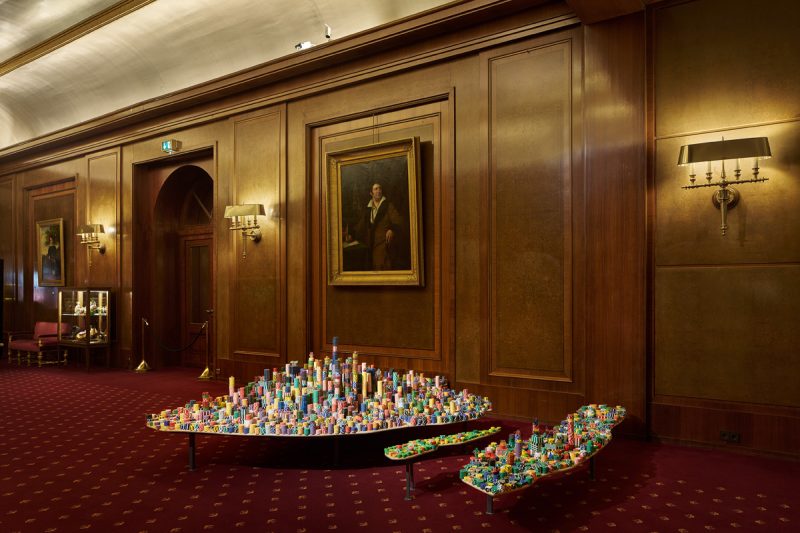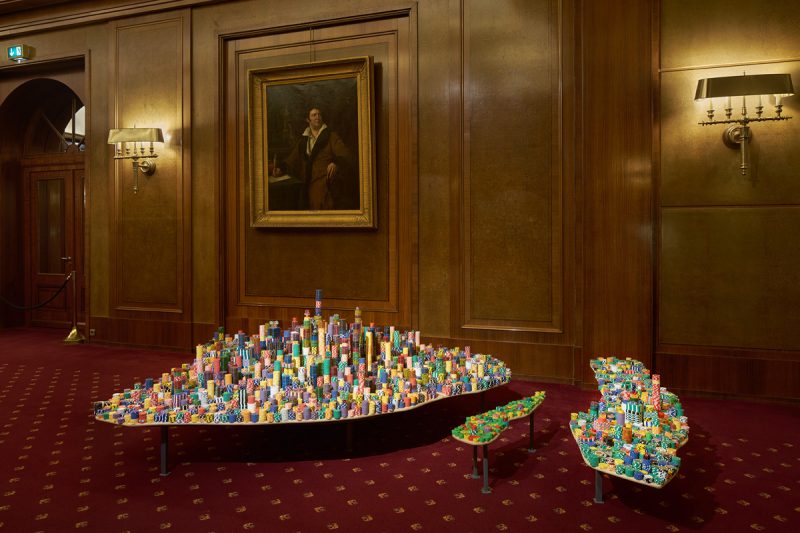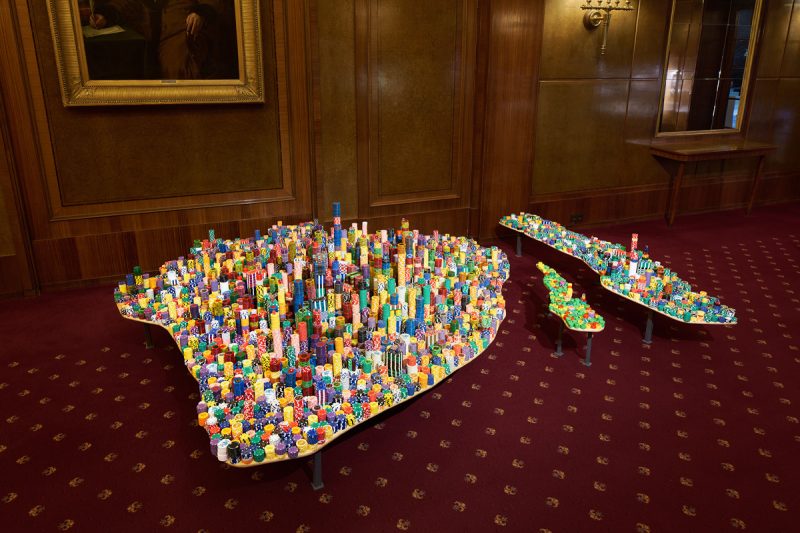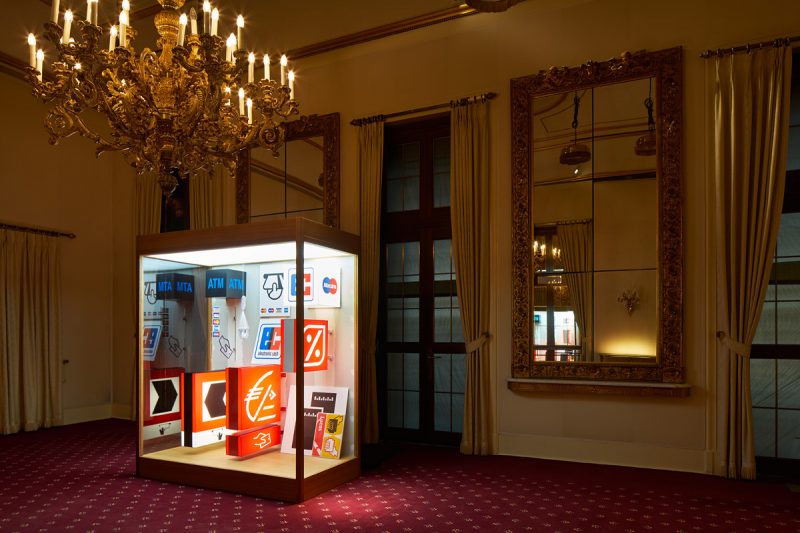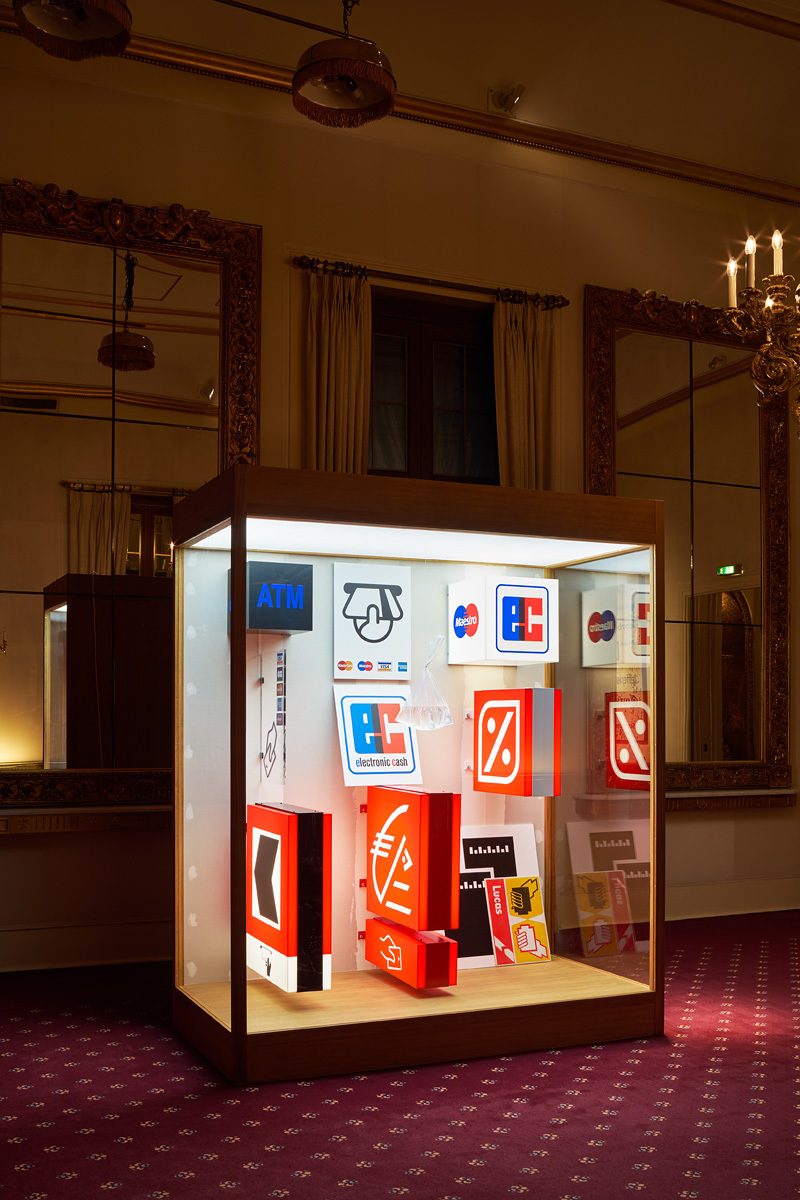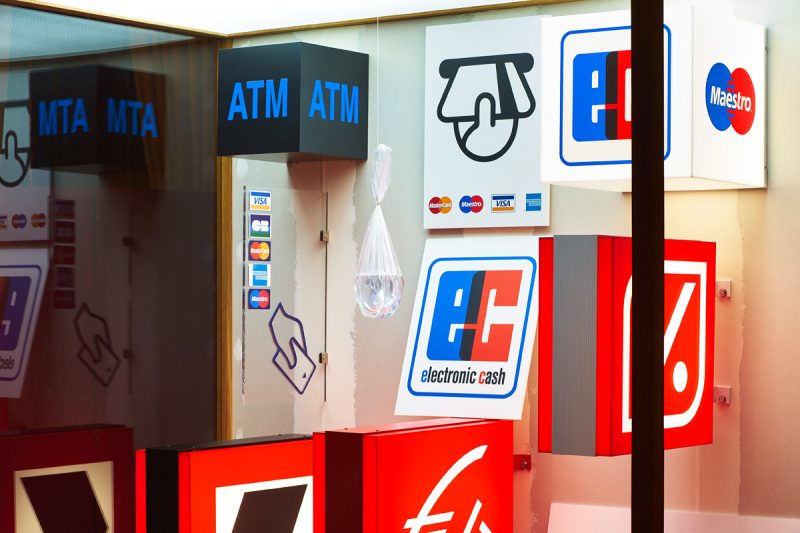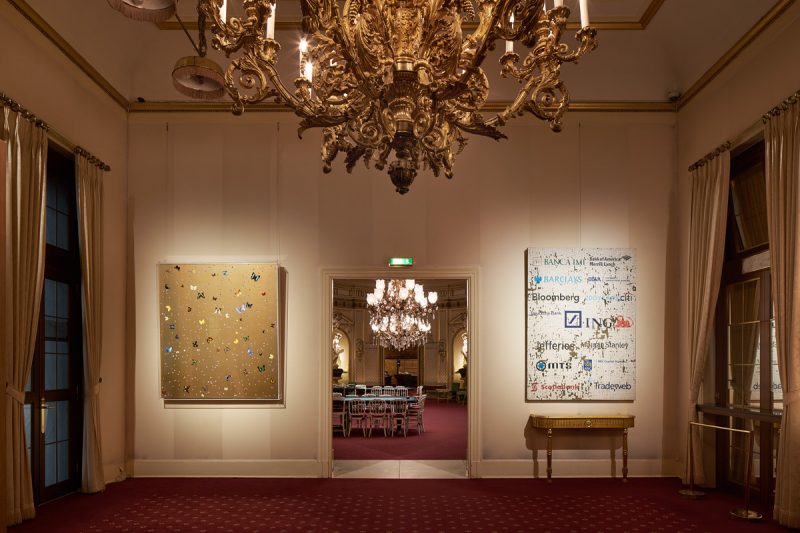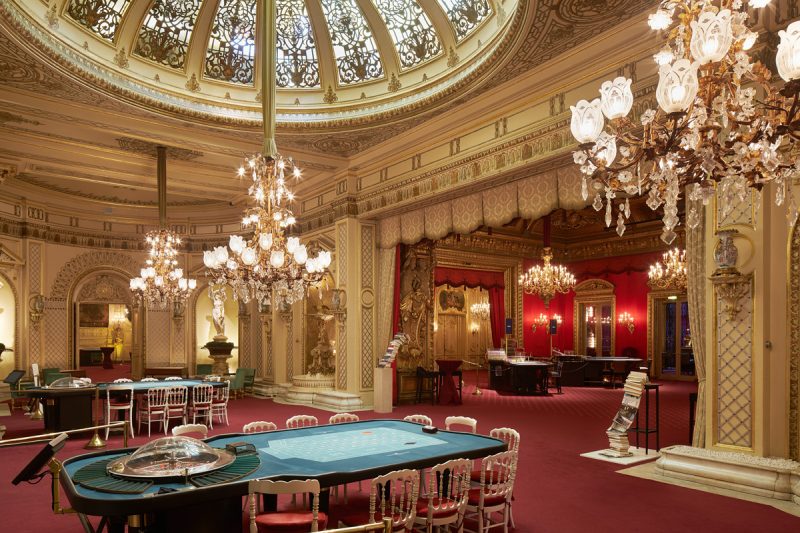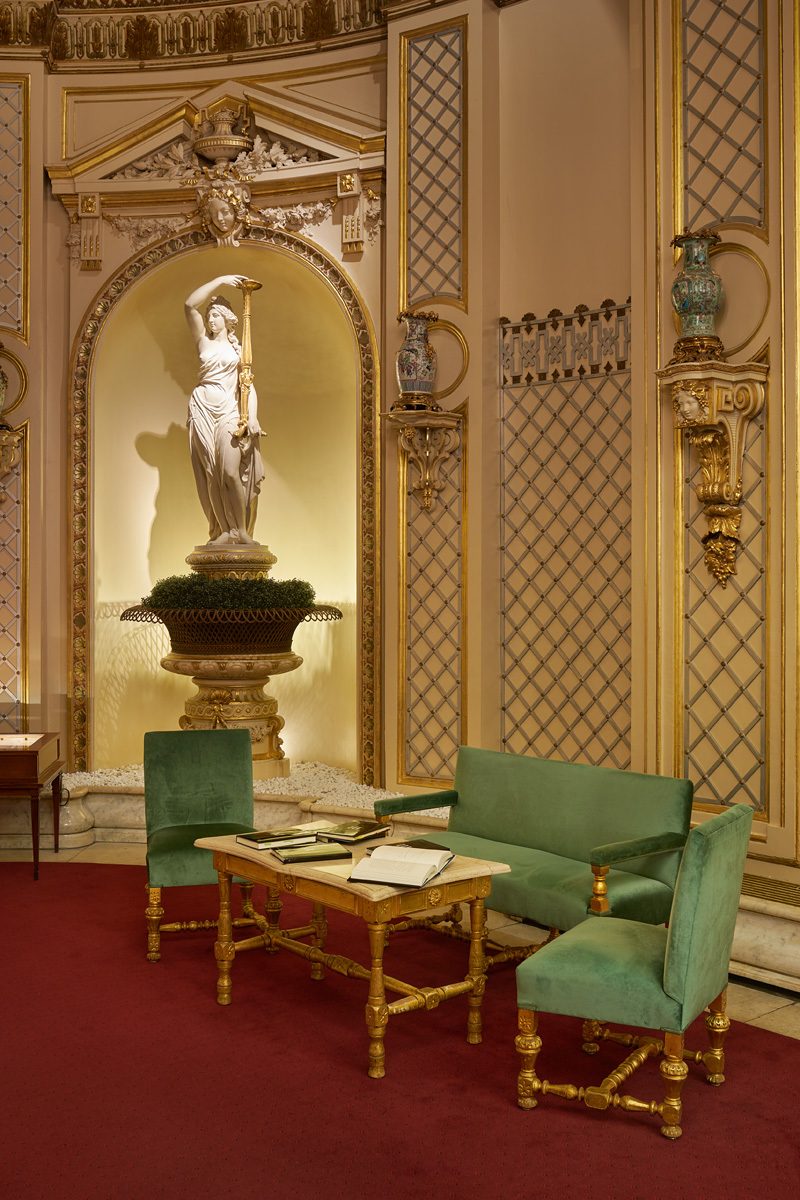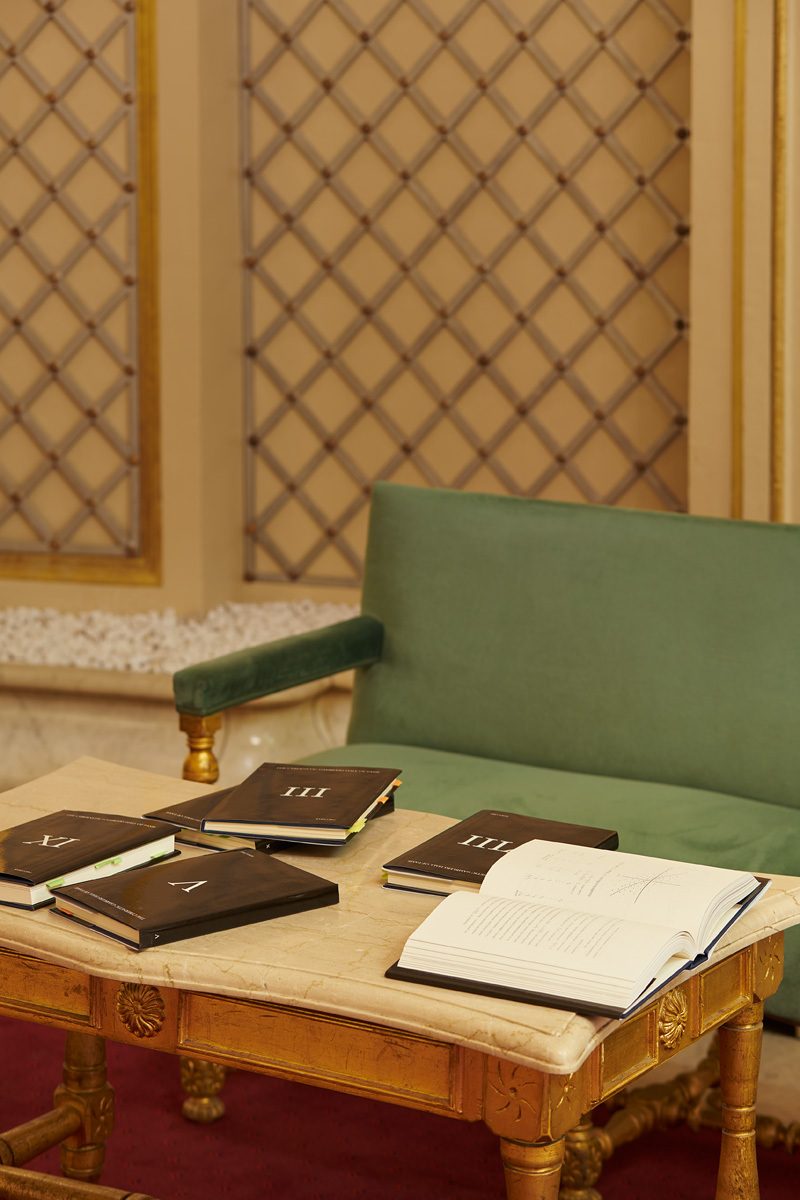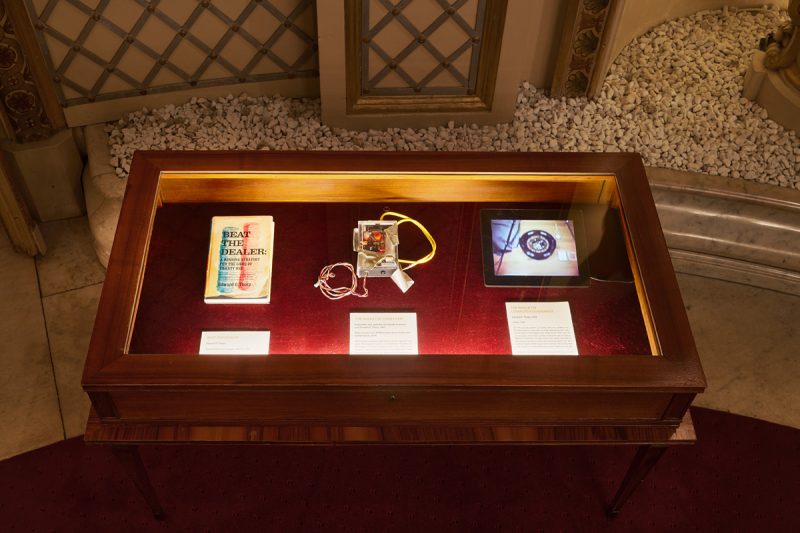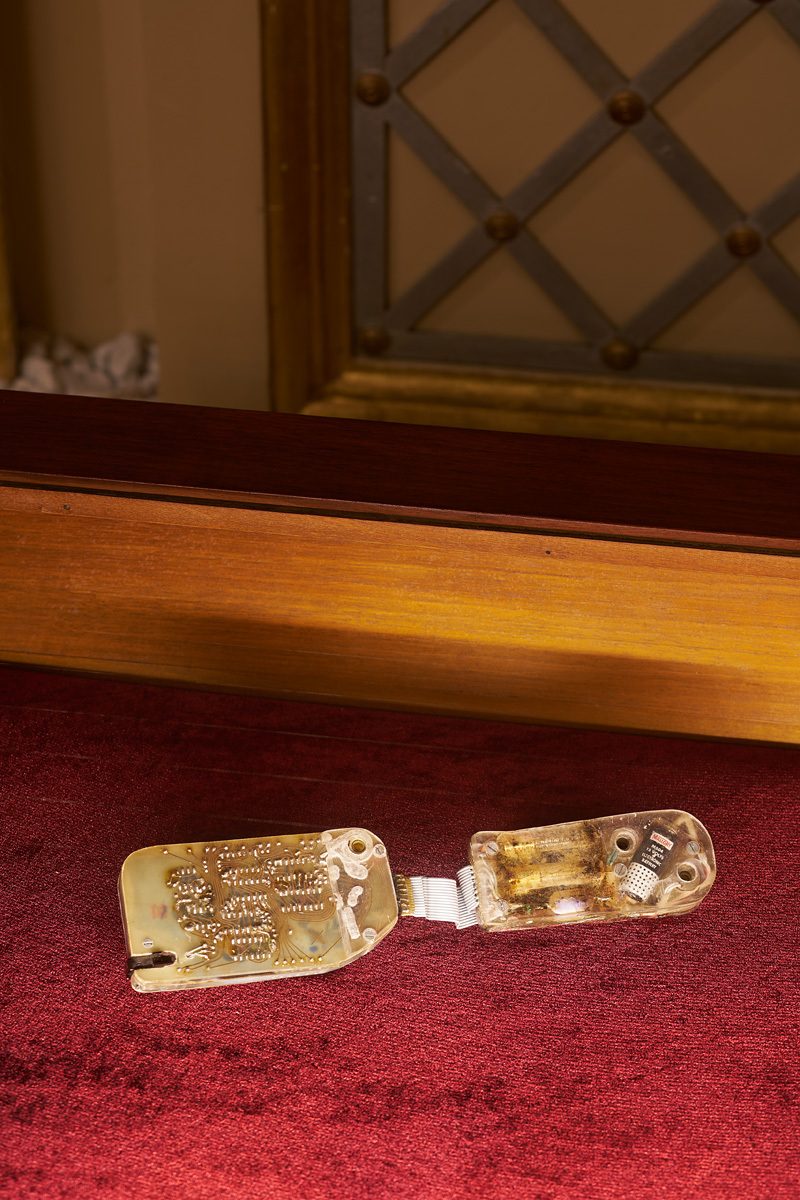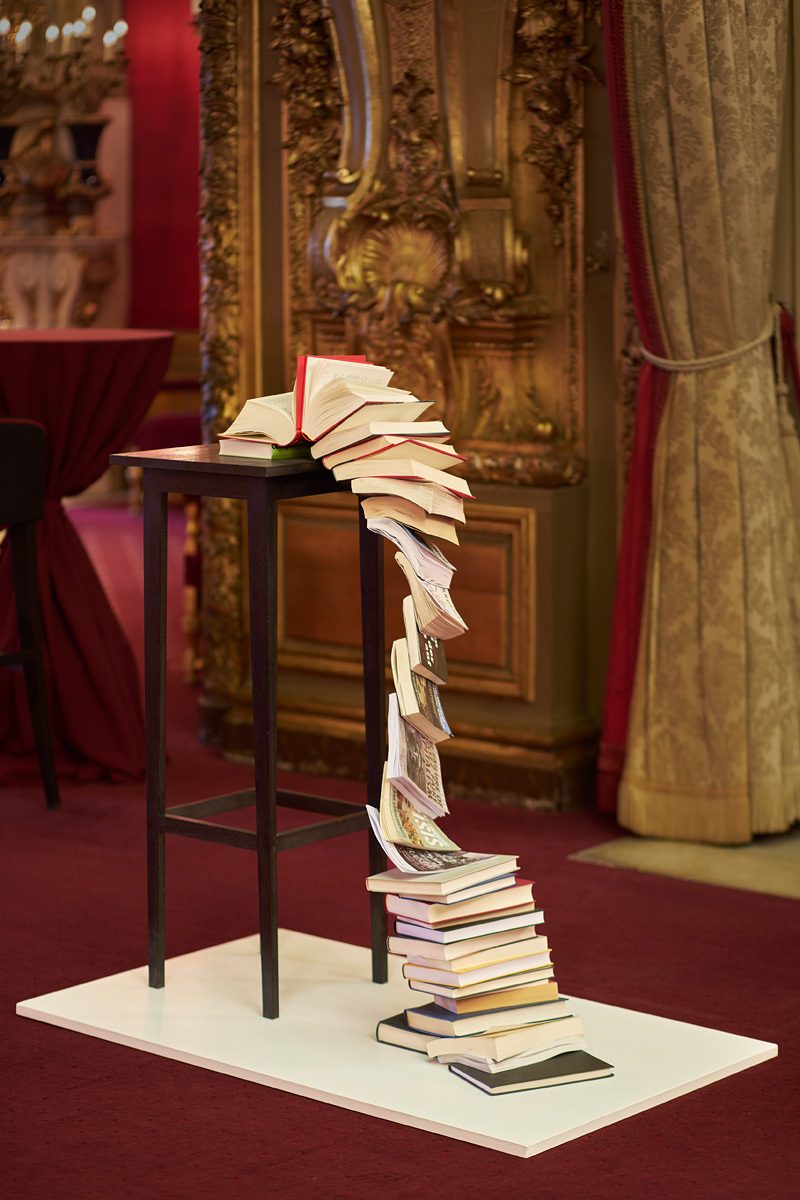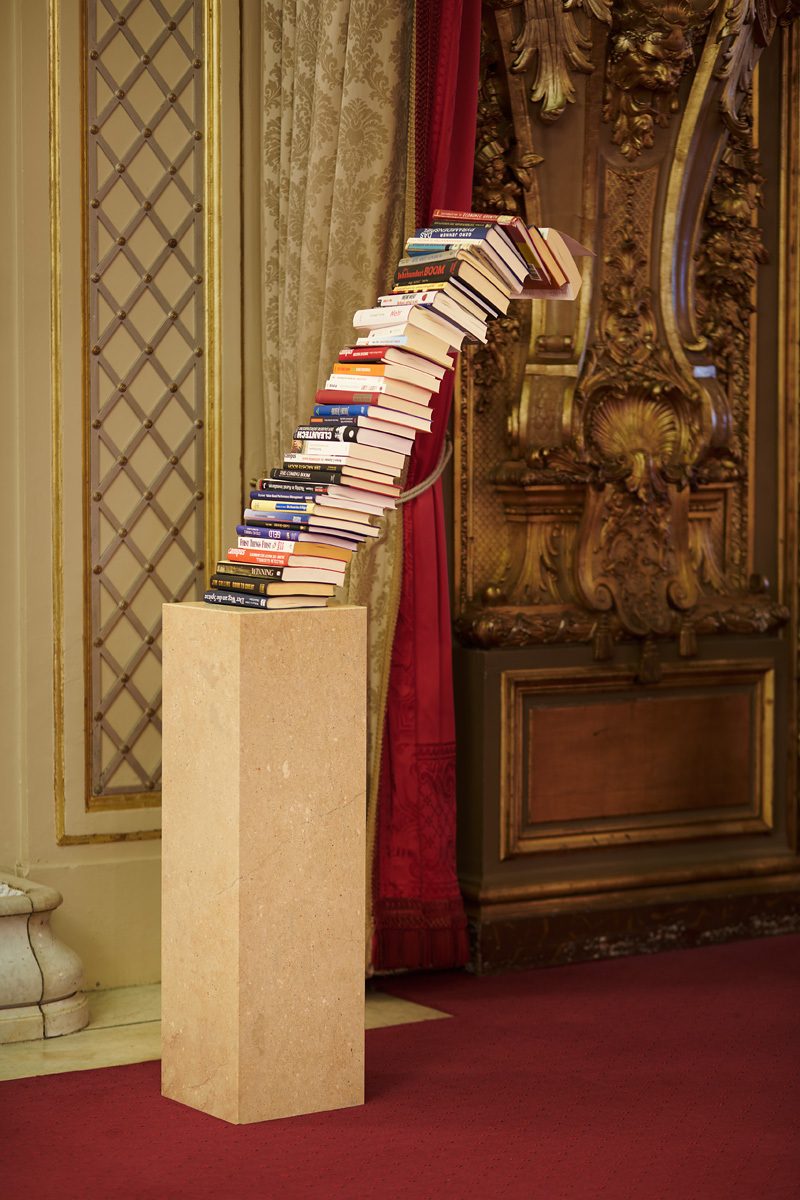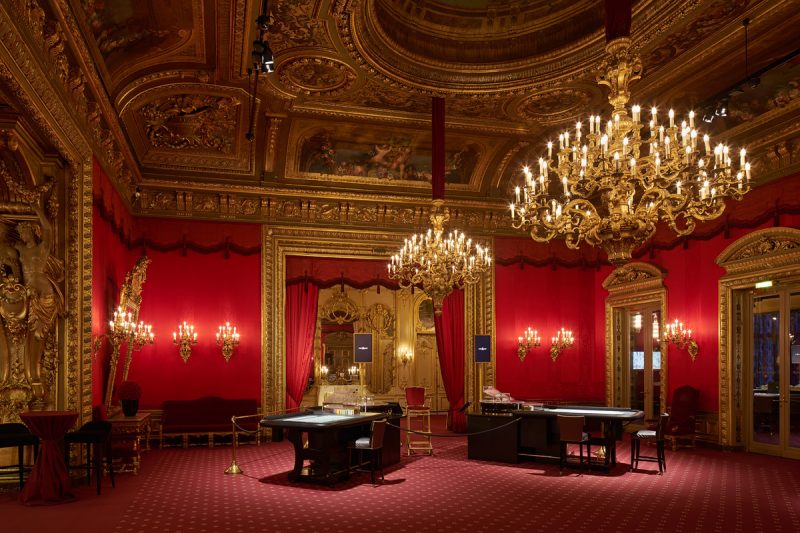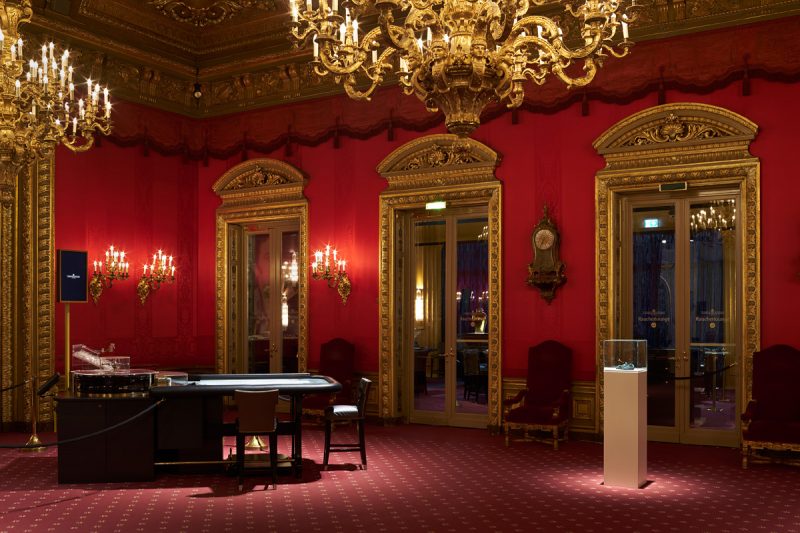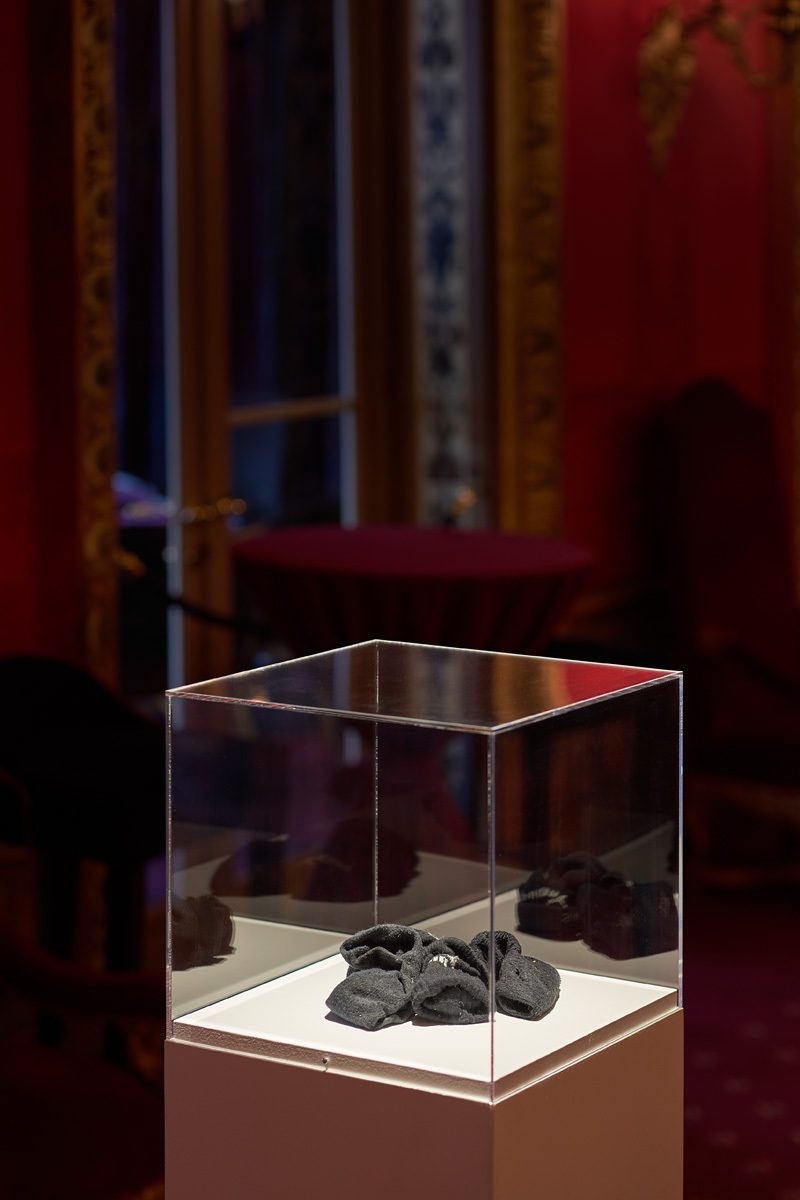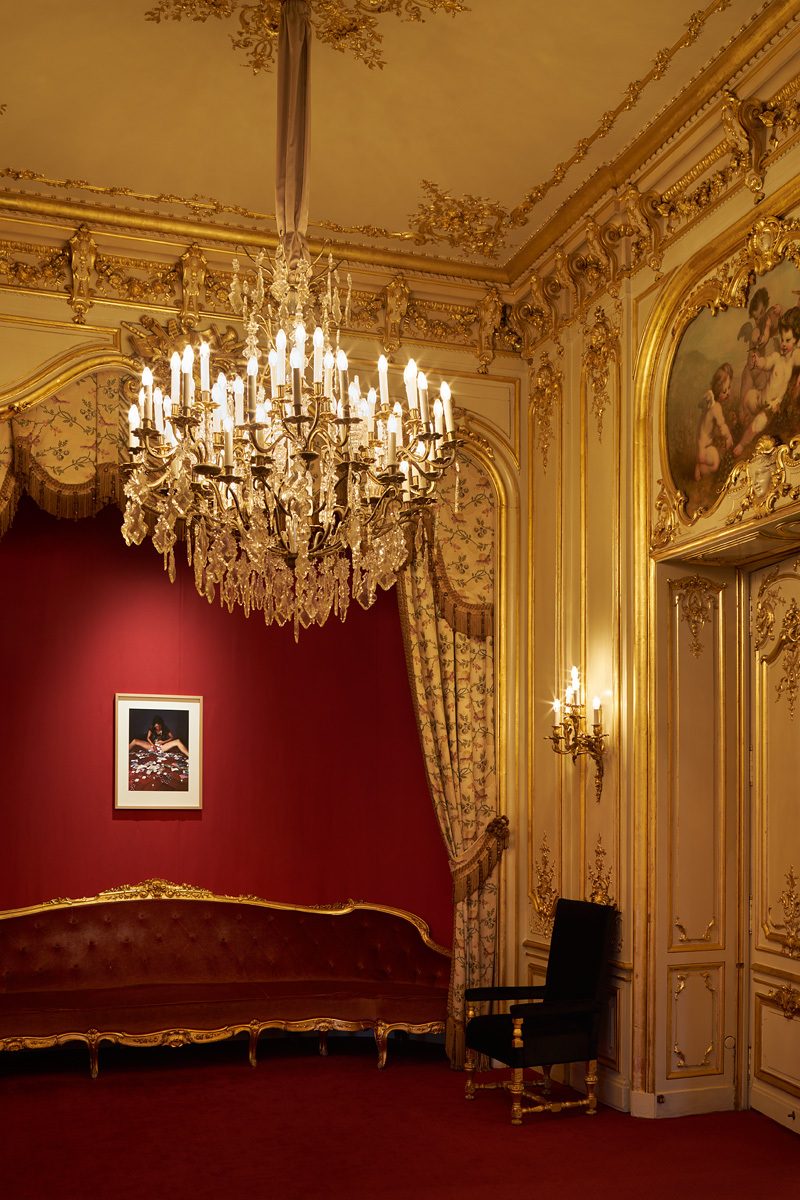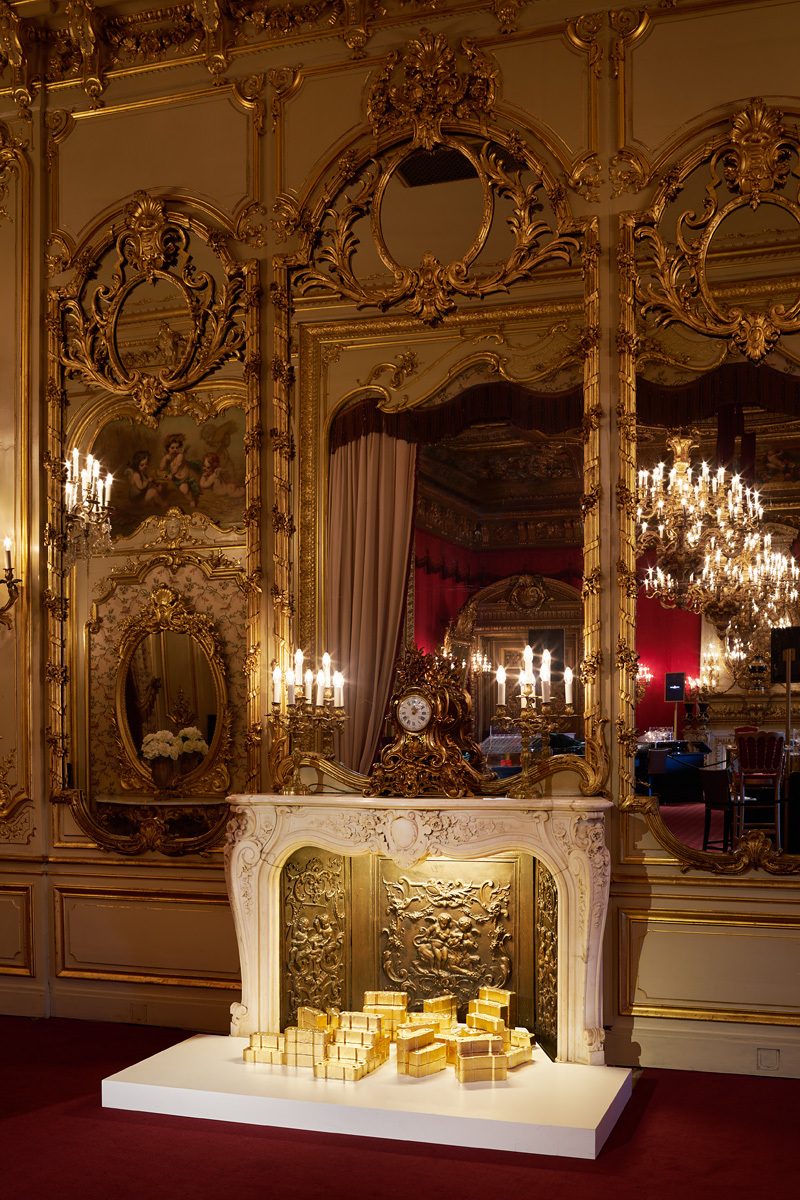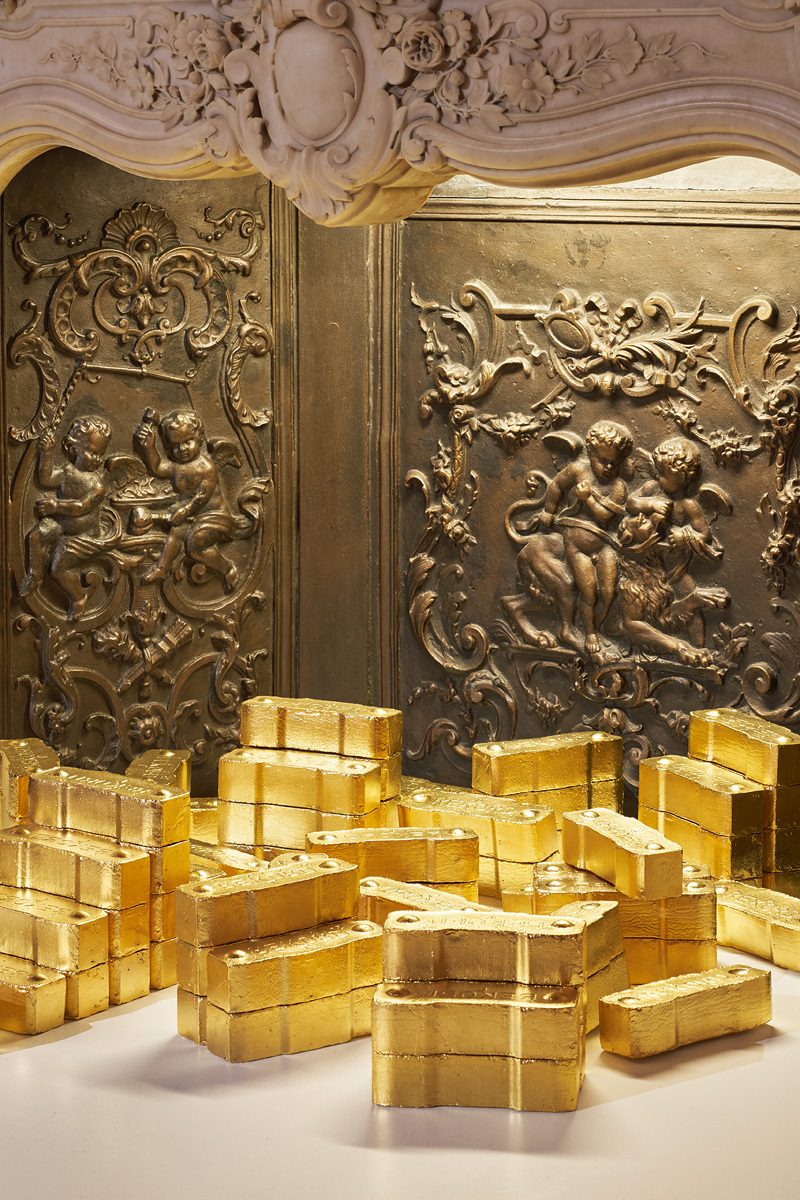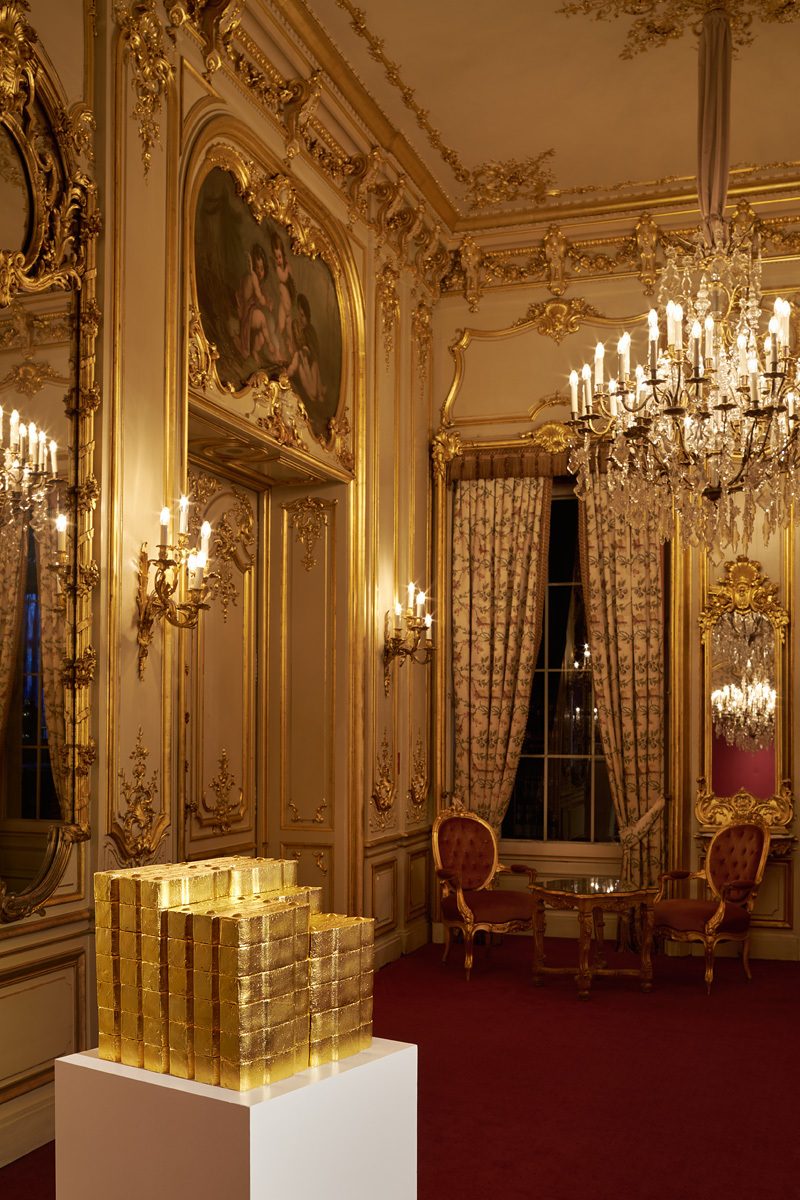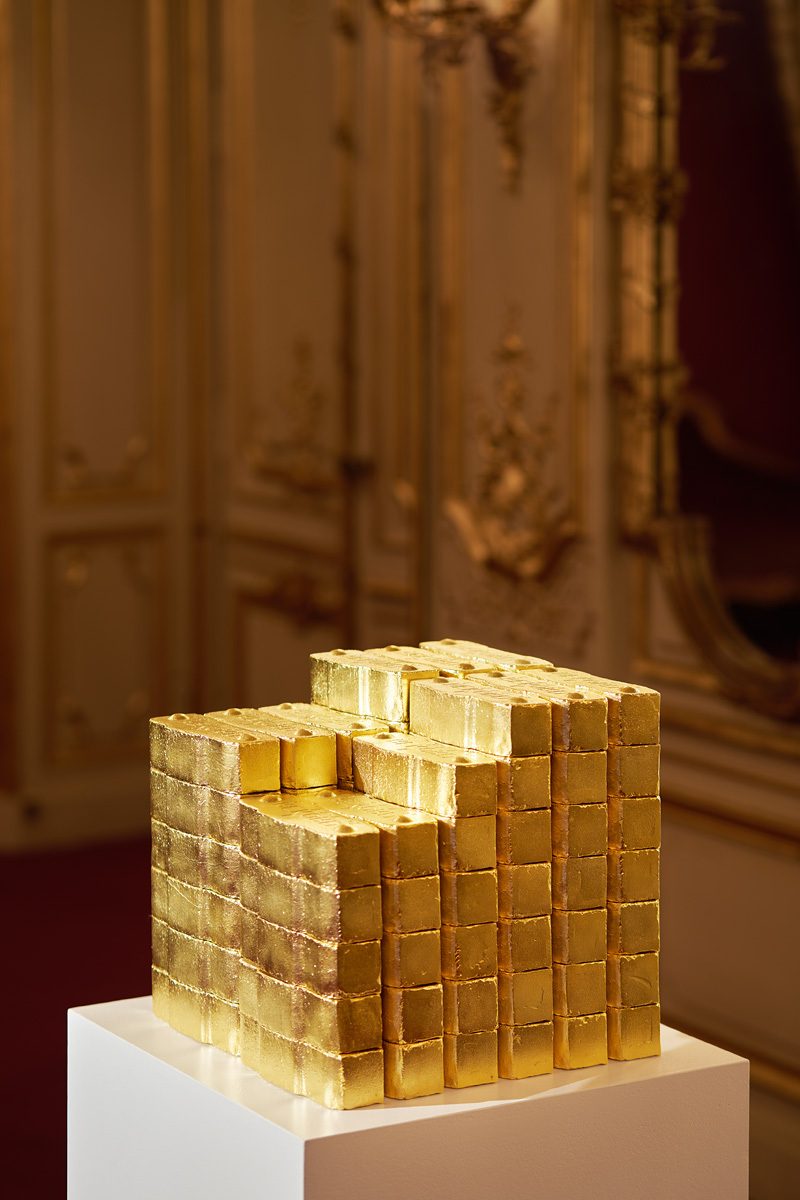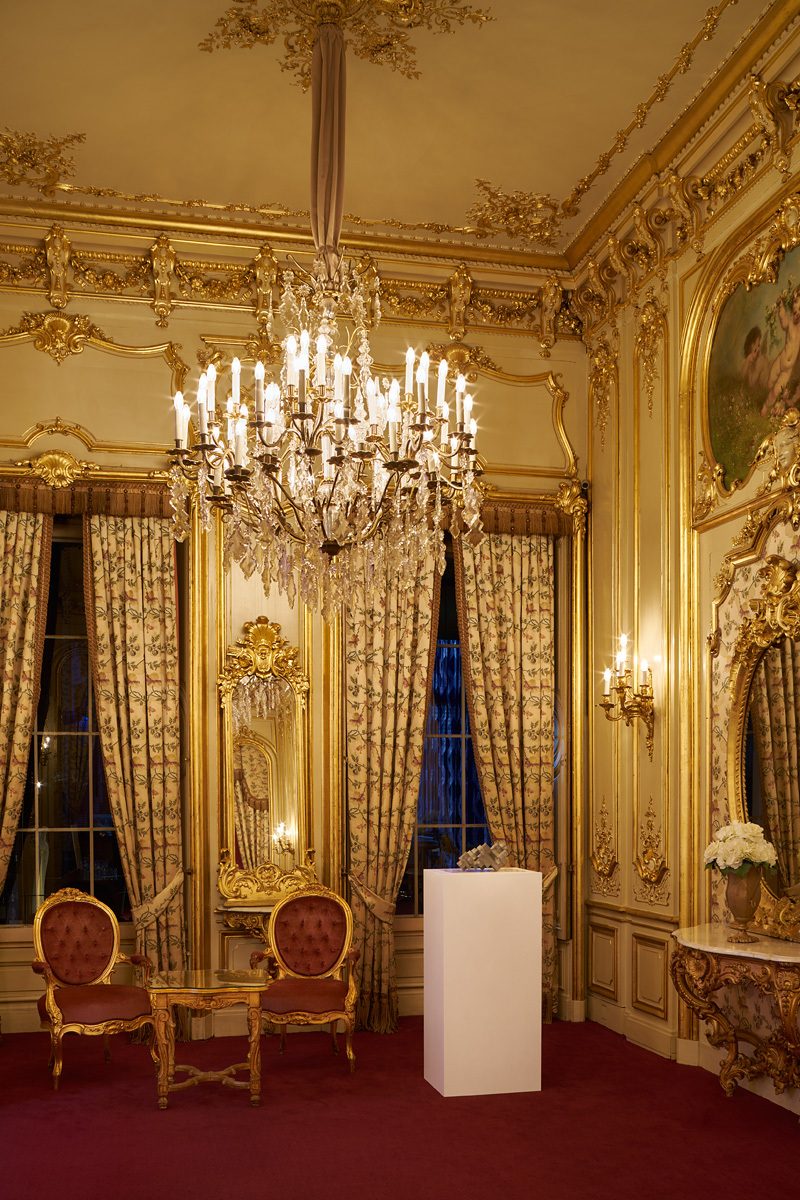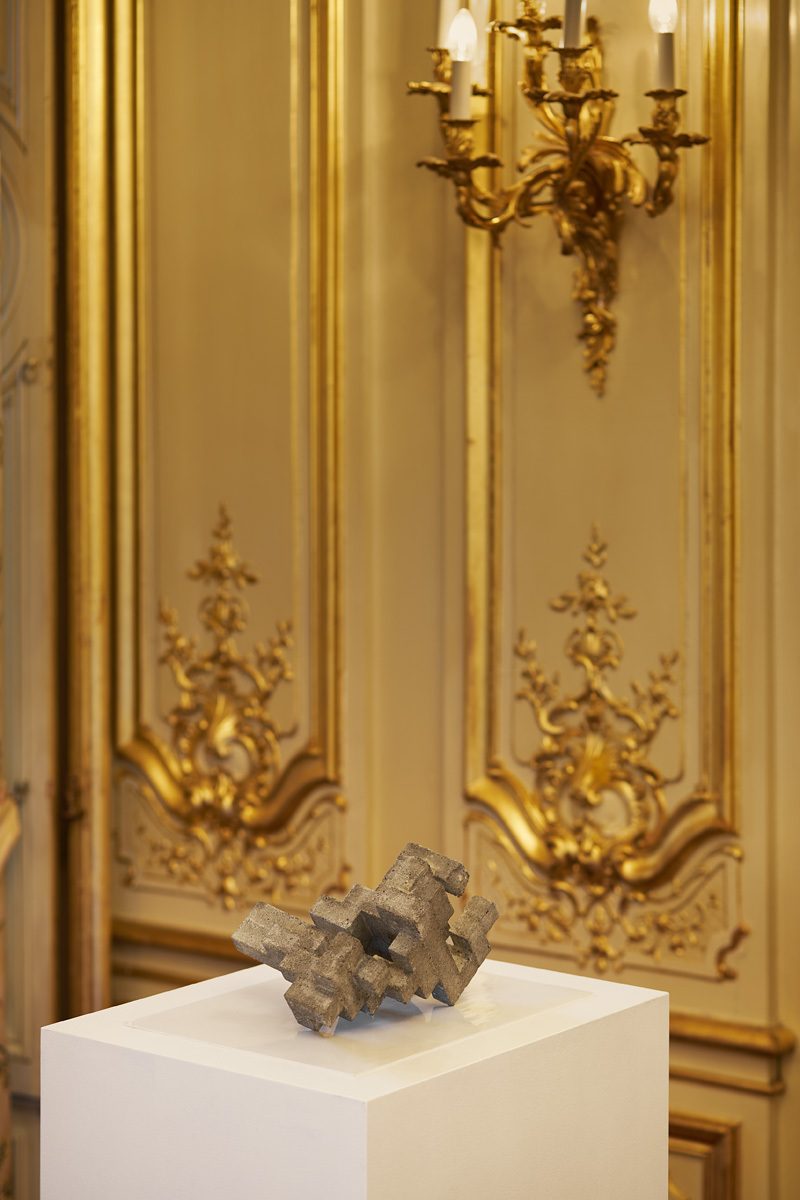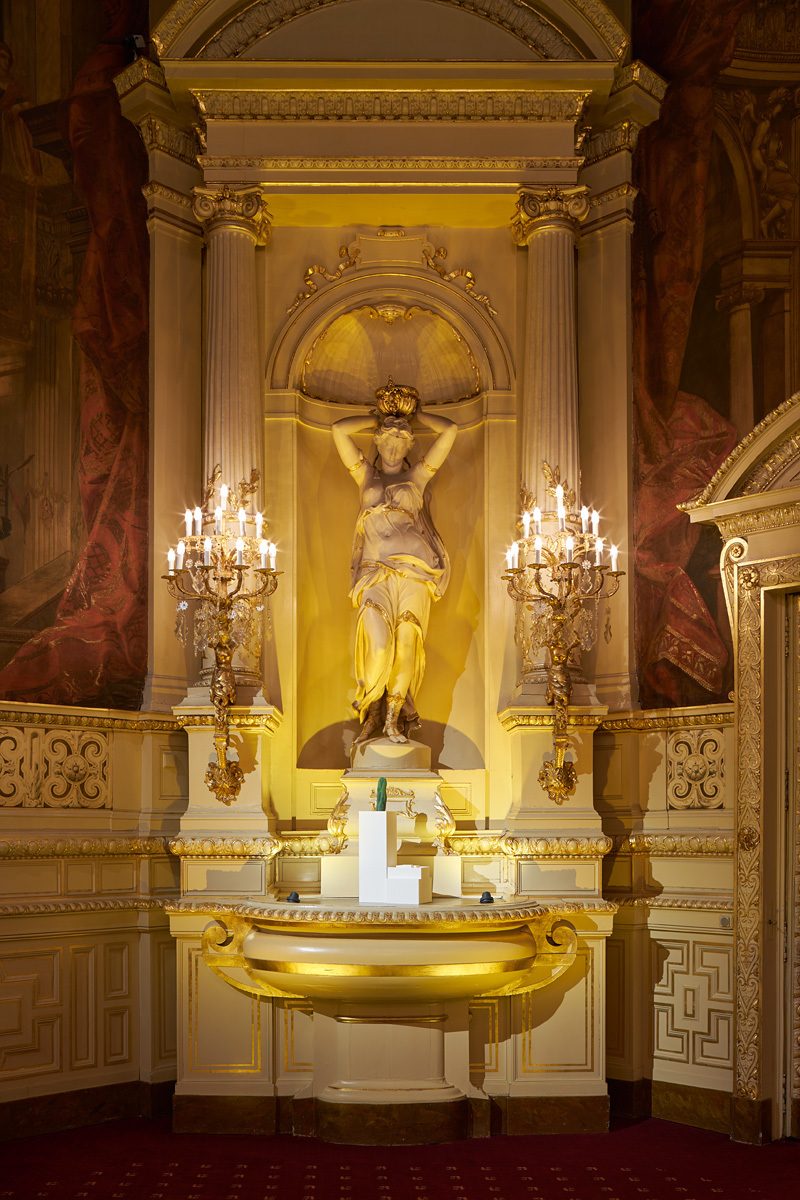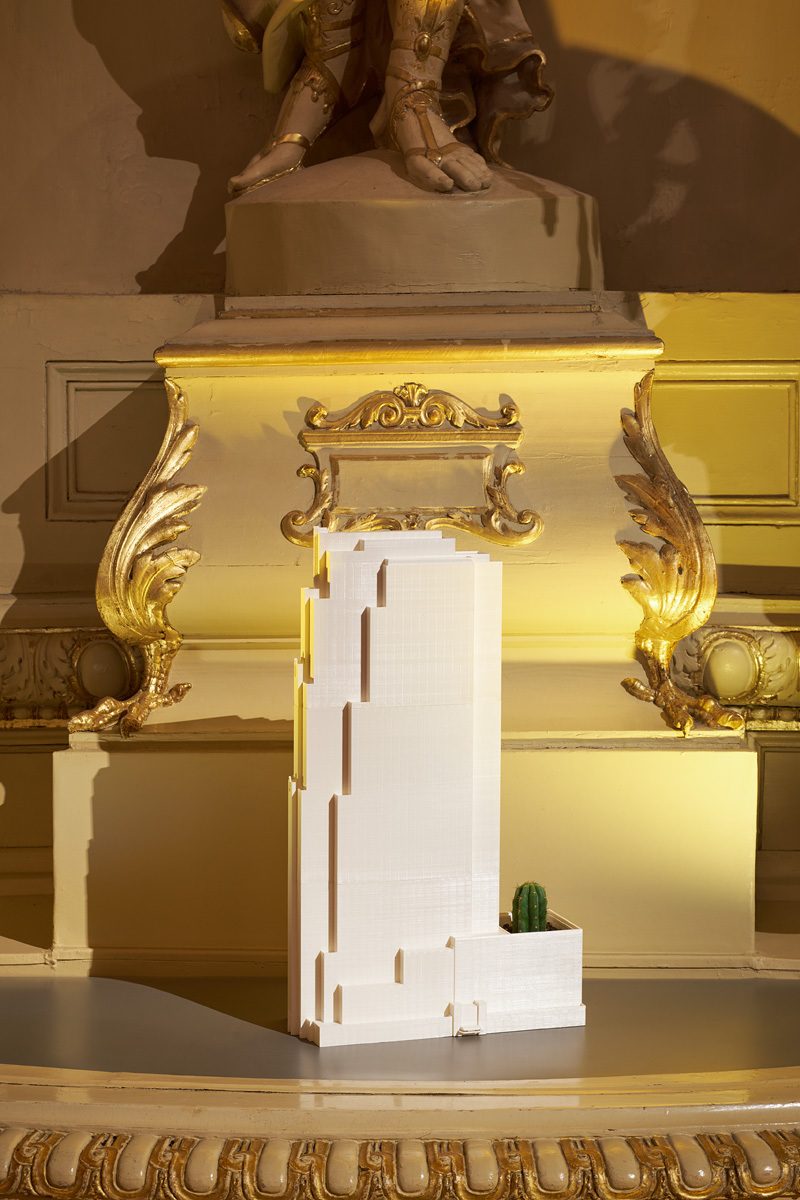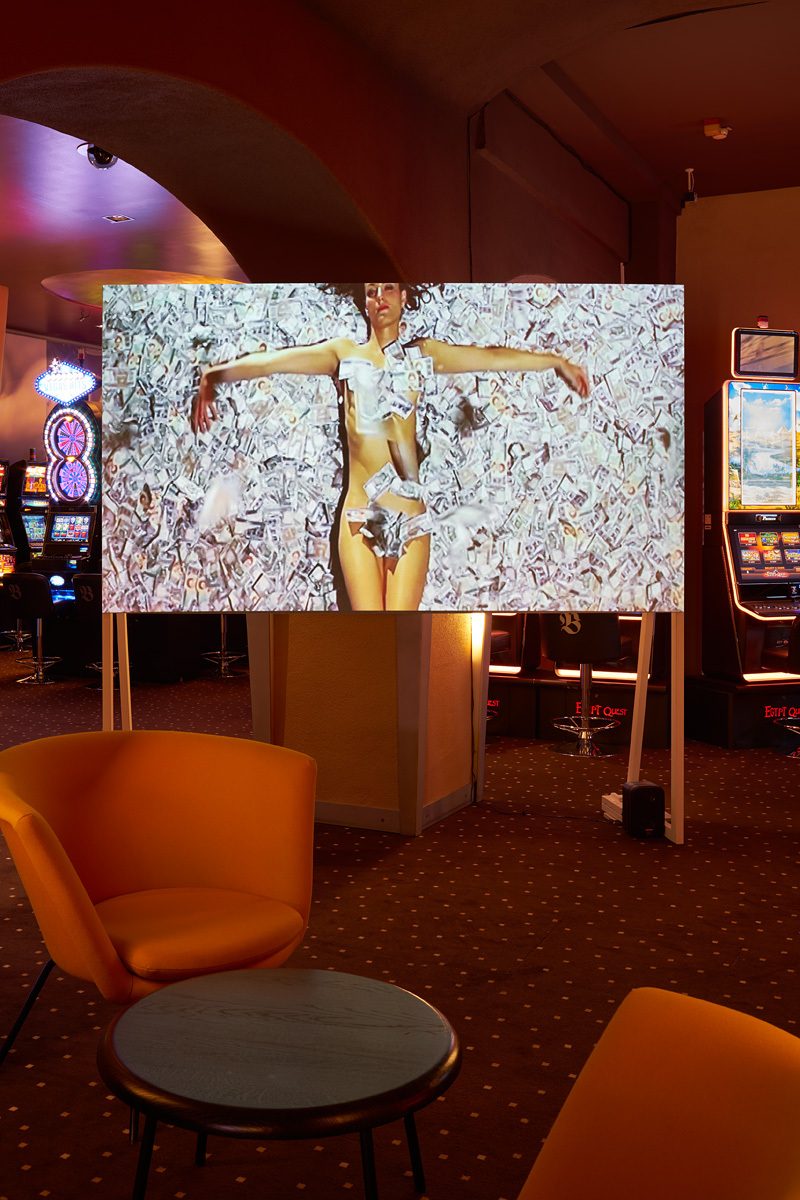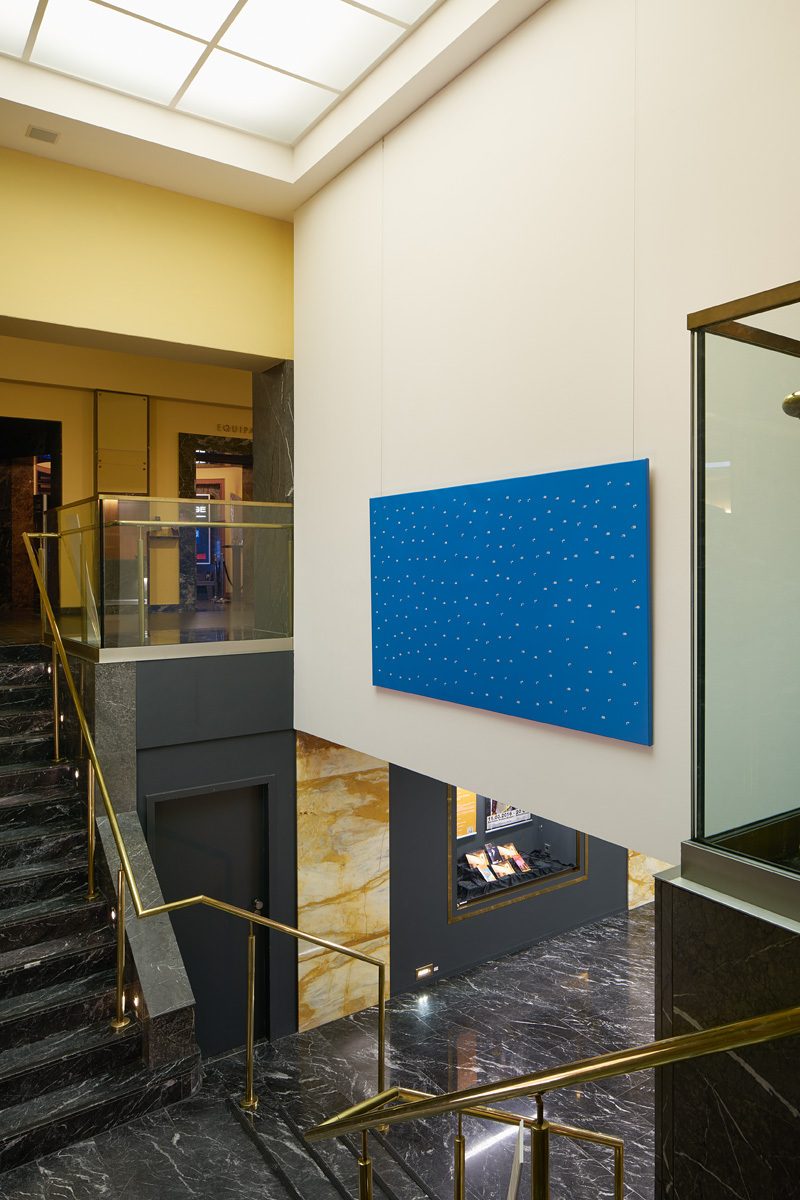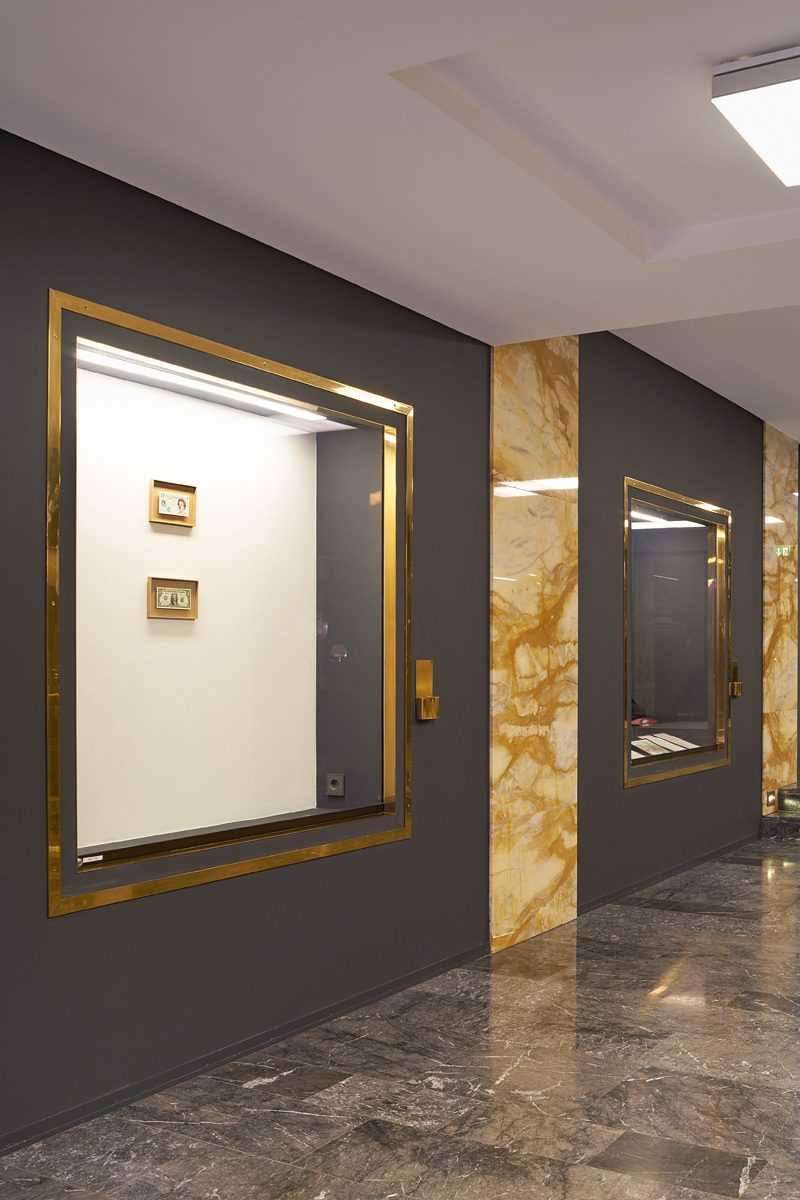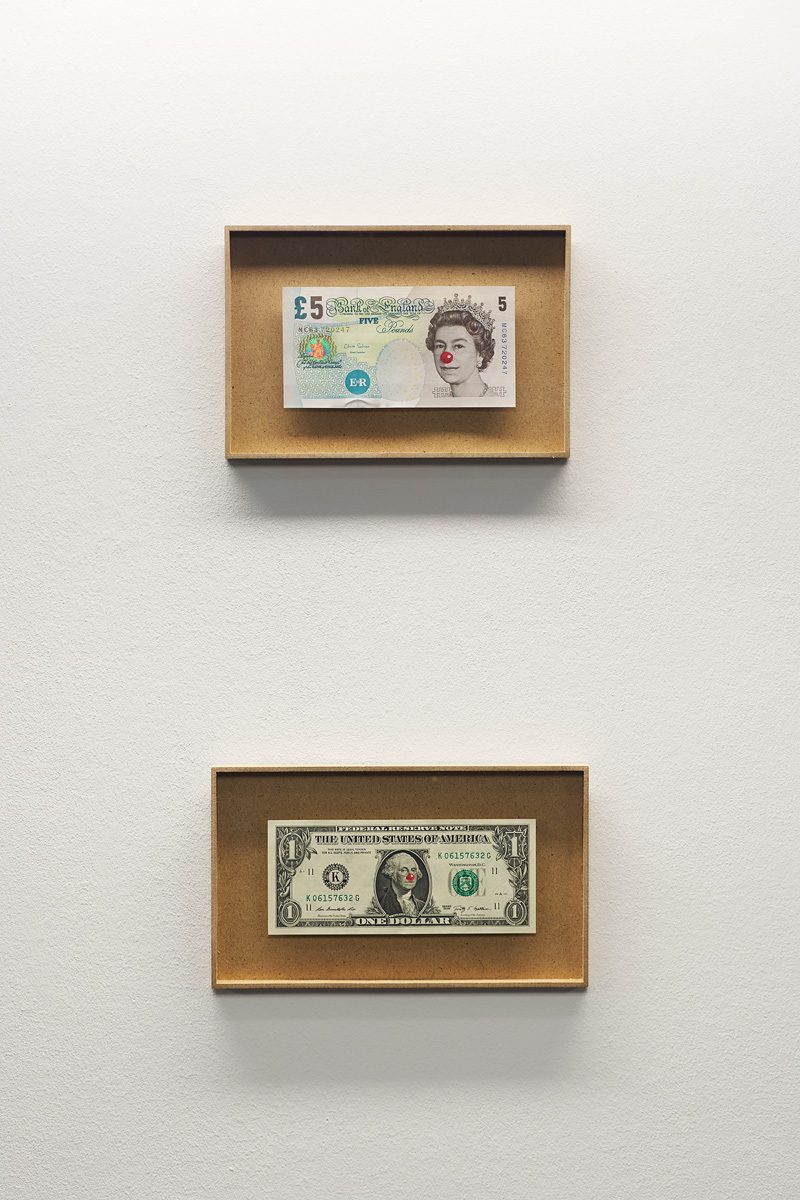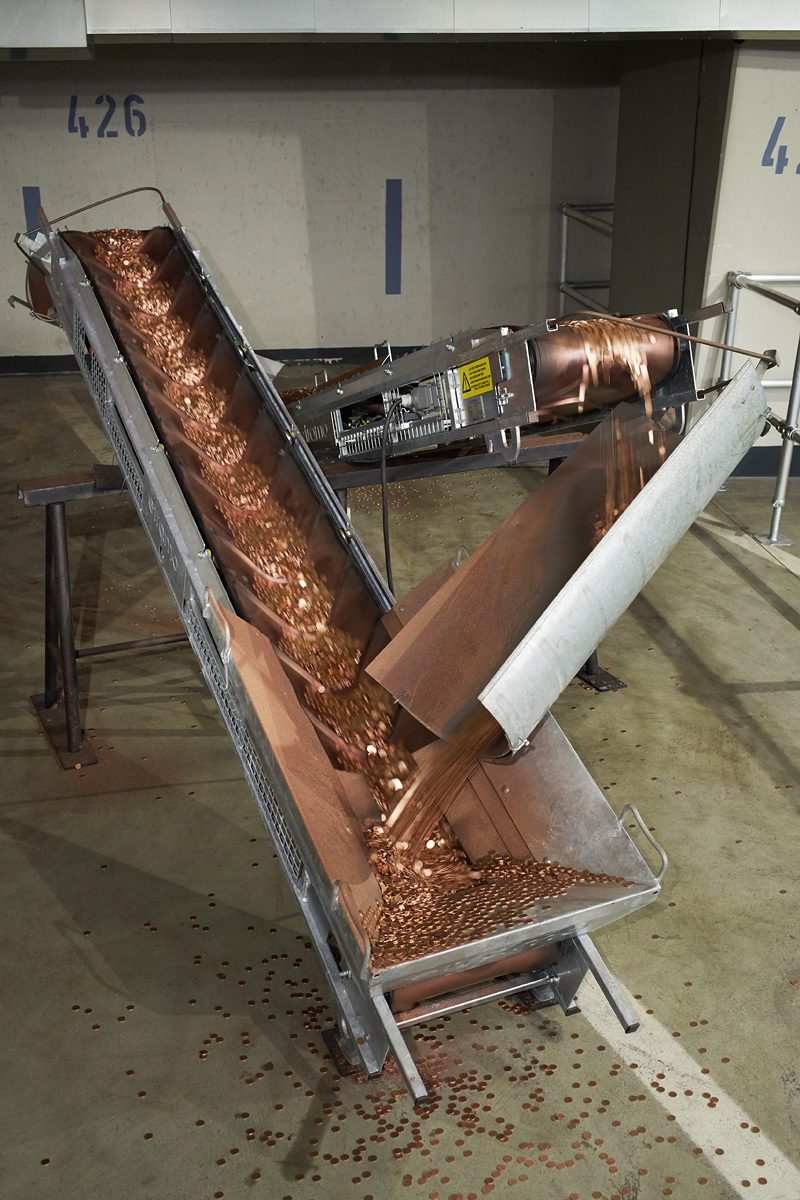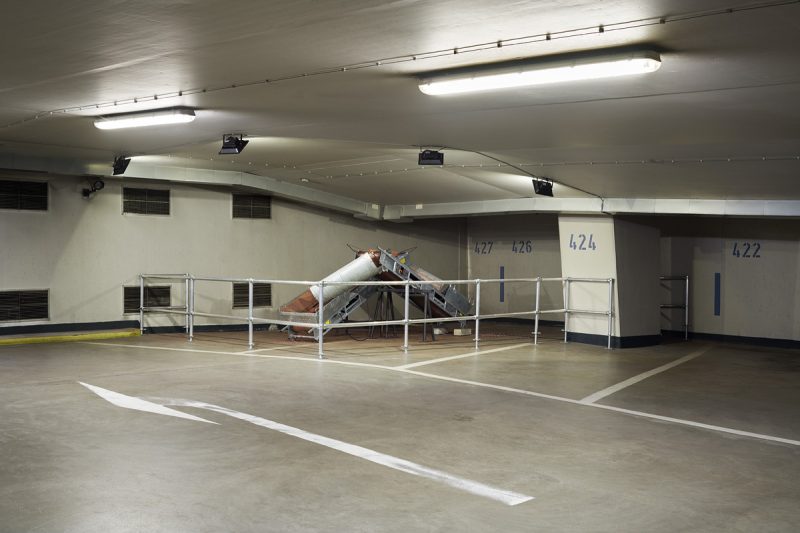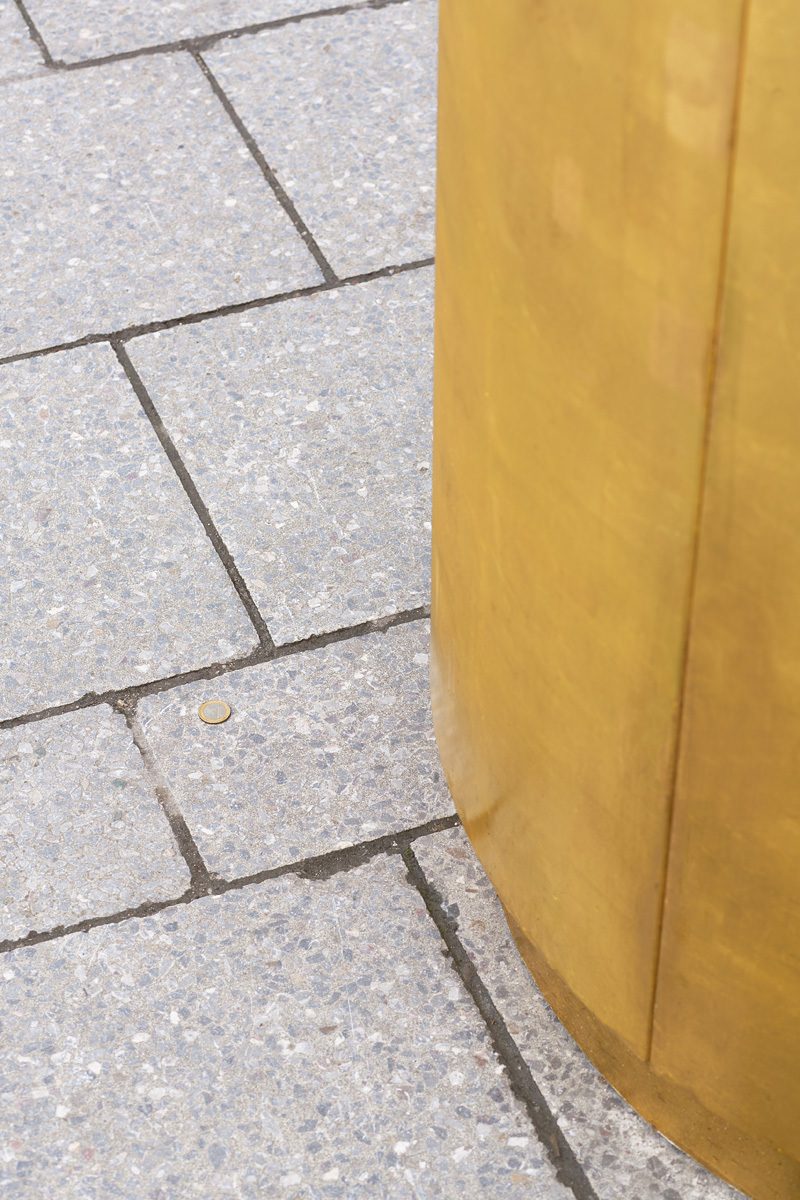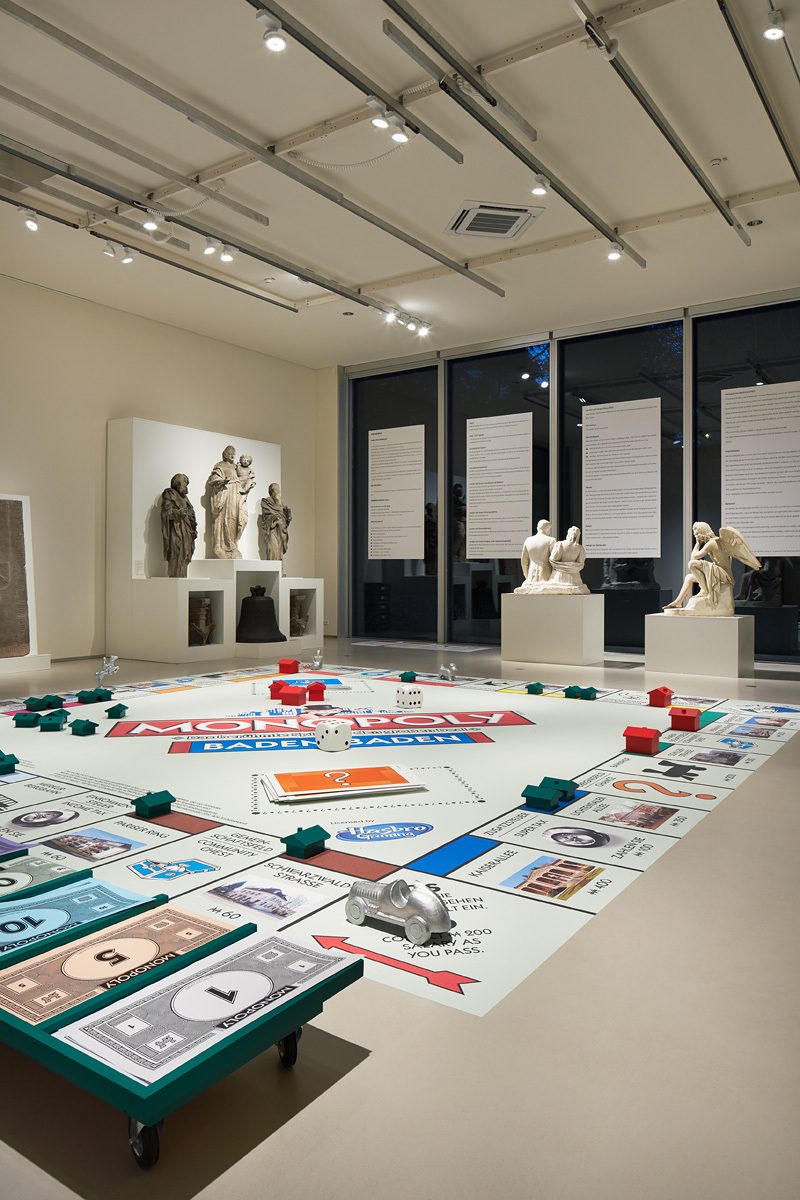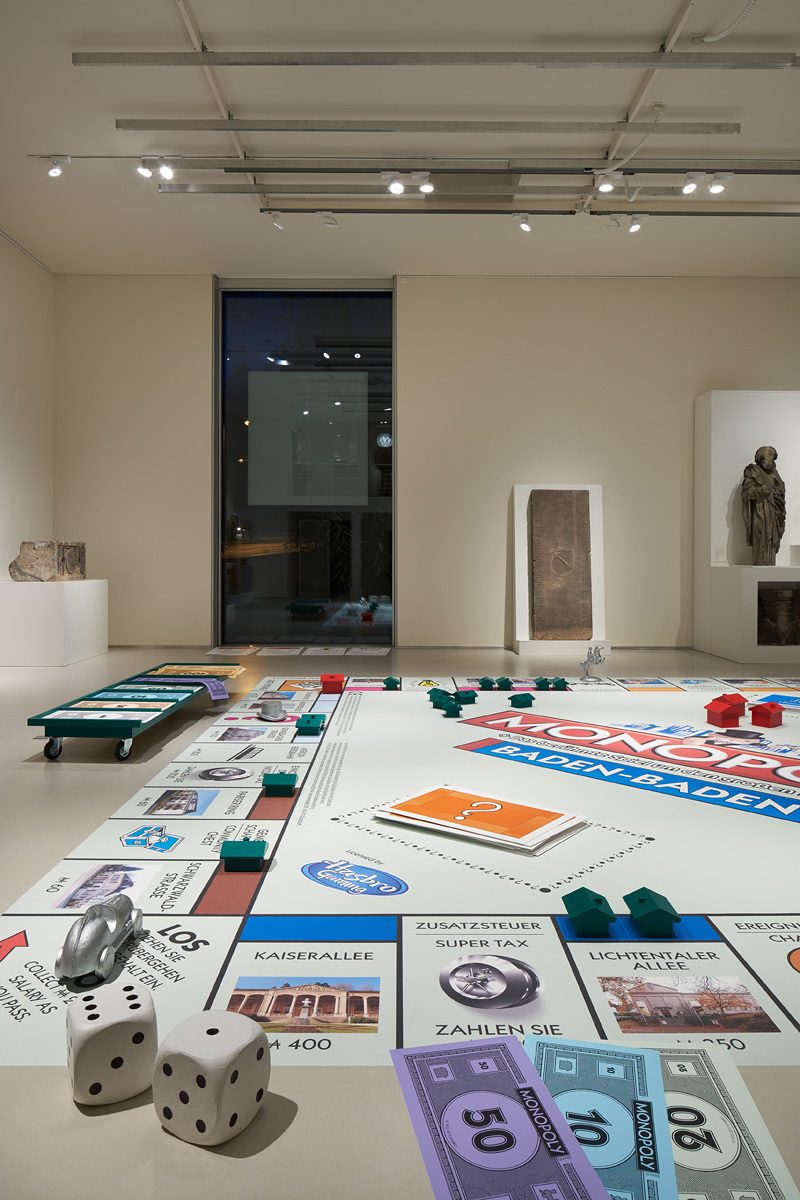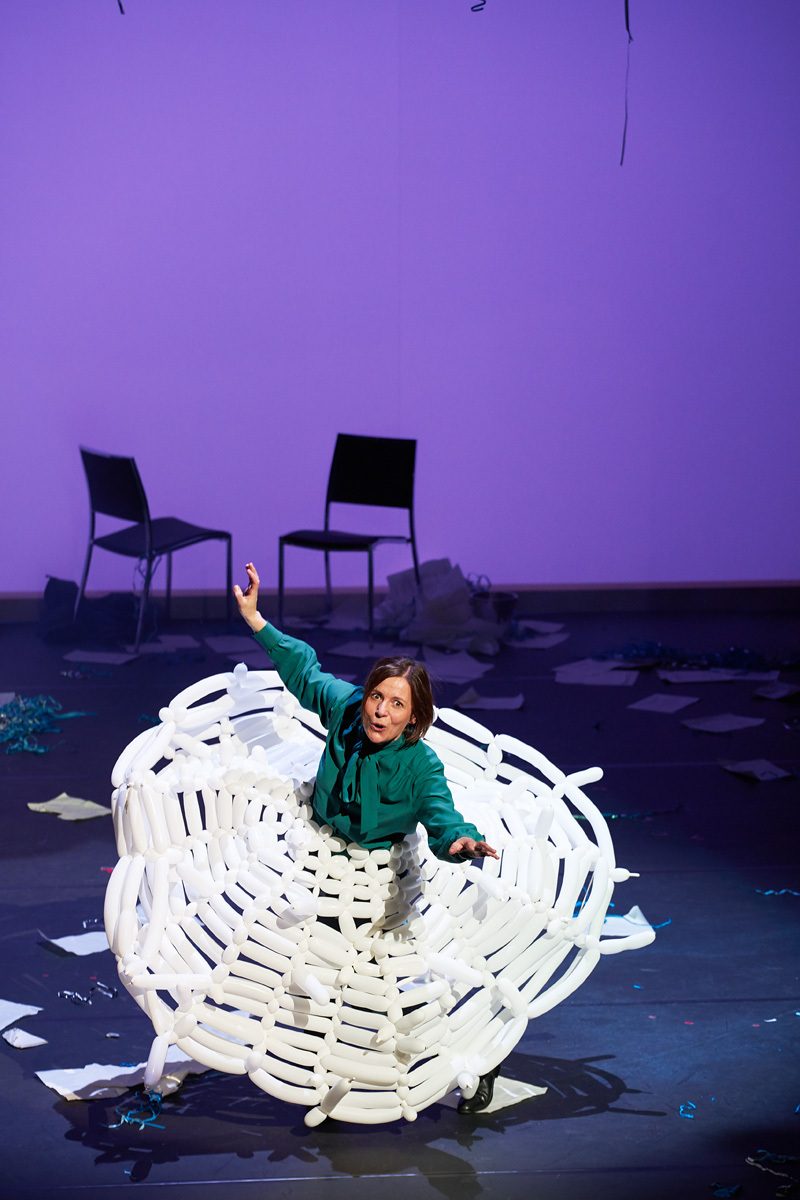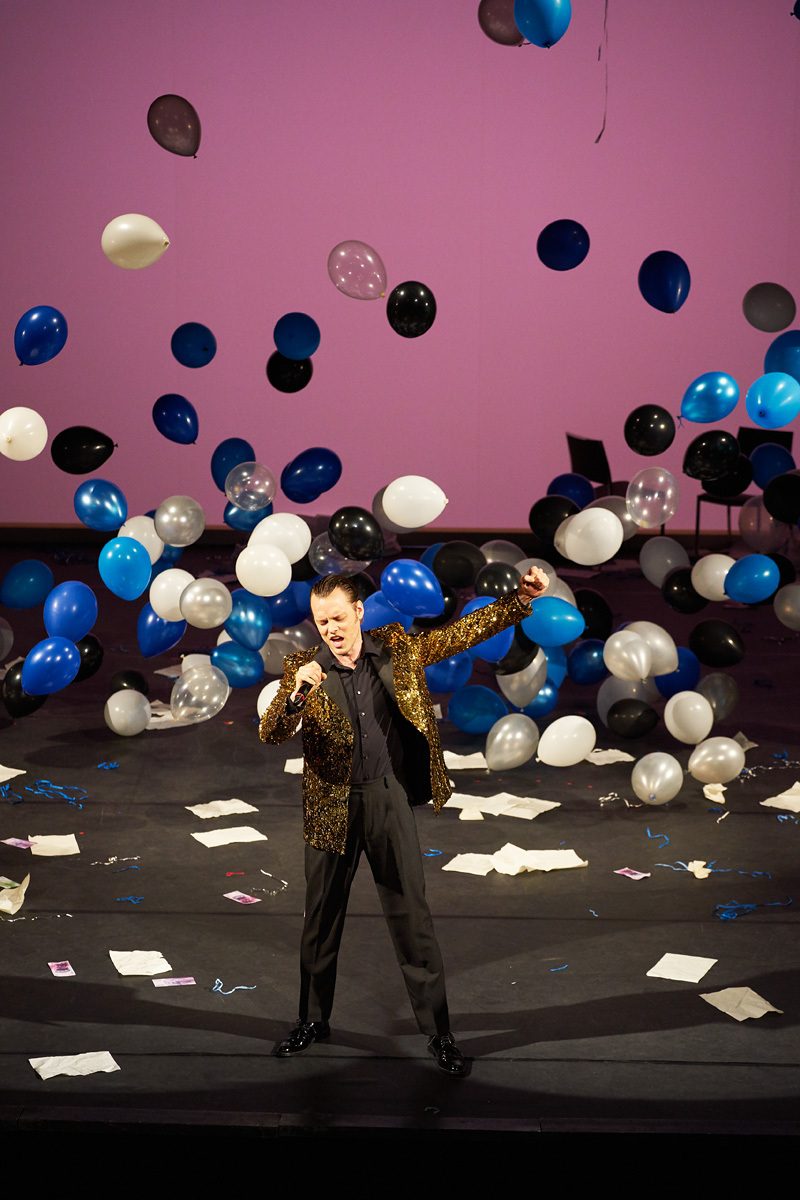Money, Good and Evil
A Visual History of the Economy
Artists
- Adel Abdessemed
- Adriana Arroyo
- Joseph Beuys
- Bewegung NURR
- Margaret Bourke-White
- Benedikt Braun
- Bartholomaeus Bruyn d. Ä.
- Ioë Bsaffot
- Christoph Büchel
- Giovanni Carlone
- Edwaert Collier
- Lucas Cranach d. Ä.
- Hanne Darboven
- Pieter de Neyn
- Pietro della Vecchia
- Dietisalvi di Speme
- Abraham Diepraem
- Dosso Dossi
- Otto Edmund Günther
- Maria Eichhorn
- Öyvind Fahlström
- Hans-Peter Feldmann
- Georg Flegel
- Sylvie Fleury
- Mark Flood
- Zachary Formwalt
- Cornelis Norbertus Gijsbrechts
- Jim Goldberg
- Johann Peter Hasenclever
- John Heartfield
- Johann Heiss
- Ernst Henseler
- Damien Hirst
- Jochen Höller
- Karl Wilhelm Hübner
- Elfriede Jelinek
- Liu Jianhua
- Hunter Jonakin
- Yves Klein
- Ludwig Knaus
- Gabriel Kuri
- Alicja Kwade
- Christin Lahr
- Dorothea Lange
- Cildo Meireles
- Aernout Mik
- Pratchaya Phinthong
- Anahita Razmi
- Hans Richter
- Jacob August Riis
- Theodoor Rombouts
- RYBN.org
- Hugh Scott-Douglas
- Axel Stockburger
- Superflex
- David Teniers d. J.
- Cheyney Thompson
- Timm Ulrichs
- Pieter van Anraedt
- Bartholomeus van Bassen
- Peeter van Bredael
- Marinus van Reymerswaele
- Adriaen van Utrecht
- Lucas van Valckenborch
- Jan Verkolje
- Andy Warhol
- Jan Wierix
Curators
- Johan Holten
- Romina Farkas
- Luisa Heese
- Antje Oswald
- Moritz Scheper
- Ana Siler
Thanks to
The exhibition is a cooperation project of the Staatliche Kunsthalle Baden-Baden with the Casino Baden-Baden, the Stadtmuseum Baden-Baden and the Theater Baden-Baden and is under the patronage of Dr. Wolfgang Schäuble, Federal Minister of Finance and Winfried Kretschmann, Minister President of the State of Baden-Württemberg.
The work of Benedikt Braun was supported by: Parkgaragengesellschaft Baden-Baden mbH and SV SparkassenVersicherung Holding AG



A Pictorial History of the Economy, the Great State Exhibition 2016, traces how artists have depicted money and how they deal with it with a large number of historical and contemporary works. The diverse emotional, psychological and moral implications of money are thematized through the presentation of a pictorial history of the economy - with more than 120 works from 1264 to 2016. Visitors to the Staatliche Kunsthalle Baden-Baden can expect an overview of more than 800 years of monetary history.
In the spring of 2016, the exhibition Money, Good and Evil will be on view at Staatliche Kunsthalle Baden-Baden, Baden-Baden Museum, and Casino Baden-Baden. The neighboring Theater Baden-Baden will present »Wirtschaftskomödie« by Elfriede Jelinek.
Staatliche Kunsthalle Baden-Baden
Money is not ahistorical and always the same. In one century it appears good, in another evil, then almost invisible. In contrast, the modern view of economics associates money with a neutral and objective concept - outside of historical and social contexts. The Baden-Baden exhibition focuses on money as a social technology and thus not least on the people and artists who make use of this technology.
Artists in chronological order: Dietisalvi di Speme, Lucas Cranach the Elder, Dosso Dossi, Marinus van Reymerswaele, Bartholomaeus Bruyn the Elder, Jan Wierix, Lucas van Valckenborch, Georg Flegel, Bartholomeus van Bassen, Pieter de Neyn, Theodoor Rombouts, Adriaen van Utrecht, Pietro della Vecchia, David Teniers the Younger, Abraham Diepraem, Peeter van Bredael, Pieter van Anraedt, Giovanni Carlone, Johann Heiss, Edwaert Collier, Jan Verkolje, Cornelis Norbertus Gijsbrechts, Johann Peter Hasenclever, Karl Wilhelm Hübner, Ludwig Knaus, Otto Edmund Günther, Ernst Henseler, Hans Richter, Joseph Beuys, Andy Warhol, Yves Klein, Timm Ulrichs, Hanne Darboven, Maria Eichhorn, Cildo Meireles, Sylvie Fleury, Aernout Mik, Christin Lahr, Pratchaya Phinthong, Zachary Formwalt, Adriana Arroyo, Ioë Bsaffot
Casino Baden-Baden
Founded in 1838 by Jacques Bénazet, the casino has a rich history, which in the broadest sense serves as the starting point for the exhibition on show there. However, the works on display are not so much about gambling for money in the casino. Rather, the works, which are exhibited directly between the gaming tables and in unusual locations, are about how big money is gambled for in the markets today. The focus is on art that takes a self-deprecating look at the art market as well as objects that reflect the casino of the financial markets before and after the last financial crisis in 2008.
Artists in chronological order: Hans-Peter Feldmann, Mark Flood, Liu Jianhua, Gabriel Kuri, Damien Hirst, Christoph Büchel, Hunter Jonakin, Adel Abdessemed, Axel Stockburger, Cheyney Thompson, Jochen Höller, Alicja Kwade, Benedikt Braun, Anahita Razmi, Hugh Scott-Douglas, Bewegung NURR, Superflex, RYBN.org
City Museum
The ambivalent history of the Monopoly game, which originated in the crisis-ridden years of the early 20th century, is recounted in the Stadtmuseum. The game, which was conceived as anti-monopolistic, became increasingly popular over the years, first in the USA and then worldwide. The presentation of the games in the exhibition is accompanied by social documentary photographs from the bleak reality of the "Great Depression".
Artists in chronological order: Jacob August Riis, John Heartfield, Dorothea Lange, Margaret Bourke-White, Öyvind Fahlström, Jim Goldberg
Theater Baden-Baden
Wirtschaftskomödie by Elfriede Jelinek
Theater Baden-Baden is presenting Elfriede Jelinek's Wirtschaftskomödie as part of the Great State Exhibition. What keeps the financial economy going? The desire of small investors to secure a share in the miraculous increase in money, unscrupulous managers who direct the flow of money to their own advantage? And what if the money is suddenly gone? Then money can still be multiplied - just different money. Breathless, perceptive, pointed: Jelinek's language is rich in associations and playfully follows the de-objectification of the value of money and words.


